Puerto Rico Lifts COVID Restrictions for Domestic Visitors. Here's What to Know
Traveling to the Caribbean island just got a lot easier
:max_bytes(150000):strip_icc():format(webp)/20181217_112519-2fd56b5f13324df3925efef91eade357.jpg)
dbvirago / Getty Images
Planning a Puerto Rico getaway just got a lot easier: the Caribbean island has eased local COVID-19 restrictions for domestic travelers, per executive order.
Starting today, March 10, all domestic travelers flying to Puerto Rico will no longer be required to provide proof of vaccination or a negative COVID test before departure. The Travel Declaration Form online portal—where visitors would upload their vaccination card and test results pre-flight—is also being done away with, according to the island's official tourism website, Discover Puerto Rico .
Along with the new entry protocols, the U.S. territory has announced that hotels, paradores , guesthouses, short-term rentals, and other businesses cannot require customers to be vaccinated or present a negative COVID test to enter. Puerto Rico's mask mandate, too, has been lifted. However, individual businesses can still institute COVID protocols, including masking and vaccination requirements, if they wish.
"Traveling to Puerto Rico is becoming easier as the Island continues to lead vaccination efforts and contagion rates continue to decrease,'' Brad Dean, CEO of Discover Puerto Rico, said in a statement . "[The] announcement lifting entry requirements for domestic travelers and reducing restrictions on island, will bring a new travel experience to those visiting. As the pandemic evolves, so will our efforts surrounding the health and safety of visitors and residents."
Although domestic travelers will have an easier time entering the U.S. territory, those arriving via international flight will still be required to present proof of vaccination and a negative COVID-19 test, taken within one day of departure.
Puerto Rico is just one of the latest destinations to lift COVID restrictions; on Monday, Indonesia dropped Bali's quarantine mandate for international travelers . On March 15, Vietnam will reopen its borders to foreign tourists.
Discover Puerto Rico. "Travel Guidelines." Accessed March 9, 2022.
Vietnam Briefing. "COVID-19 in Vietnam: Travel Updates and Restrictions." February 16, 2022.
These Countries Are Allowing Vaccinated Travelers to Visit
The US Is Ending Its COVID-19 Testing Requirement for International Travelers
Here’s What It’s Like to Travel to Puerto Rico Right Now
The CDC Won't Require COVID-19 Testing for U.S. Domestic Travel. Here's Why
Travel to North America: A Reopening Timeline, Country by Country
Is It Safe to Travel to Europe?
Canada to Loosen Border Restrictions Next Month—as Long as You're Vaccinated
Travel to Africa and the Middle East: A Reopening Timeline, Country by Country
What to Expect If You’re Going on a Cruise This Winter
The CDC's New COVID-19 Guidance for Activities Is Great News for Travelers
CDC Releases New COVID-19 Testing Guidelines for Cruise Ships
Morocco Reopens Its Borders to Citizens of 67 Countries, Including the U.S.
Major Cruise Lines Are Dropping Mask Mandates
Is Thailand Ready to Reopen Its Borders to Tourists?
Here's What the CDC Recommends for Holiday Travel
Bali and Thailand Plan on Fully Reopening to Tourists by July
You are using an outdated browser. Upgrade your browser today or install Google Chrome Frame to better experience this site.

Puerto Rico (U.S.) Traveler View
Travel health notices, vaccines and medicines, non-vaccine-preventable diseases, stay healthy and safe.
- Packing List
After Your Trip
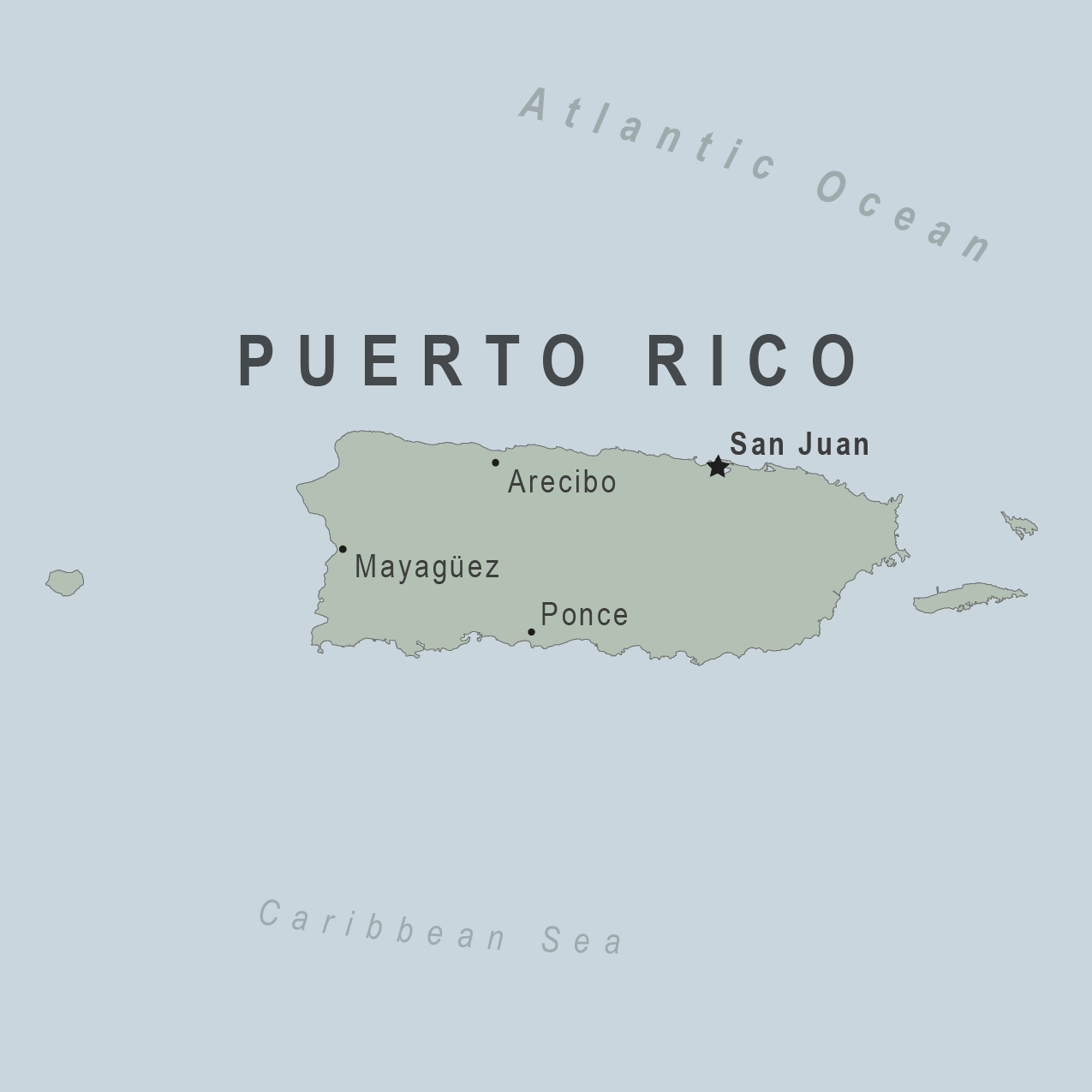
There are no notices currently in effect for Puerto Rico (U.S.).
⇧ Top
Check the vaccines and medicines list and visit your doctor at least a month before your trip to get vaccines or medicines you may need. If you or your doctor need help finding a location that provides certain vaccines or medicines, visit the Find a Clinic page.
Routine vaccines
Recommendations.
Make sure you are up-to-date on all routine vaccines before every trip. Some of these vaccines include
- Chickenpox (Varicella)
- Diphtheria-Tetanus-Pertussis
- Flu (influenza)
- Measles-Mumps-Rubella (MMR)
Immunization schedules
All eligible travelers should be up to date with their COVID-19 vaccines. Please see Your COVID-19 Vaccination for more information.
COVID-19 vaccine
Hepatitis A
Recommended for unvaccinated travelers one year old or older going to Puerto Rico.
Infants 6 to 11 months old should also be vaccinated against Hepatitis A. The dose does not count toward the routine 2-dose series.
Travelers allergic to a vaccine component or who are younger than 6 months should receive a single dose of immune globulin, which provides effective protection for up to 2 months depending on dosage given.
Unvaccinated travelers who are over 40 years old, immunocompromised, or have chronic medical conditions planning to depart to a risk area in less than 2 weeks should get the initial dose of vaccine and at the same appointment receive immune globulin.
Hepatitis A - CDC Yellow Book
Dosing info - Hep A
Hepatitis B
Recommended for unvaccinated travelers of all ages traveling to Puerto Rico.
Hepatitis B - CDC Yellow Book
Dosing info - Hep B
Cases of measles are on the rise worldwide. Travelers are at risk of measles if they have not been fully vaccinated at least two weeks prior to departure, or have not had measles in the past, and travel internationally to areas where measles is spreading.
All international travelers should be fully vaccinated against measles with the measles-mumps-rubella (MMR) vaccine, including an early dose for infants 6–11 months, according to CDC’s measles vaccination recommendations for international travel .
Measles (Rubeola) - CDC Yellow Book
Puerto Rico is free of dog rabies. However, rabies may still be present in wildlife species, particularly bats. CDC recommends rabies vaccination before travel only for people working directly with wildlife. These people may include veterinarians, animal handlers, field biologists, or laboratory workers working with specimens from mammalian species.
Rabies - CDC Yellow Book
Recommended for most travelers, especially those staying with friends or relatives or visiting smaller cities or rural areas.
Typhoid - CDC Yellow Book
Dosing info - Typhoid
Avoid contaminated water
Leptospirosis
How most people get sick (most common modes of transmission)
- Touching urine or other body fluids from an animal infected with leptospirosis
- Swimming or wading in urine-contaminated fresh water, or contact with urine-contaminated mud
- Drinking water or eating food contaminated with animal urine
- Avoid contaminated water and soil
Clinical Guidance
Avoid bug bites, african tick-bite fever.
- Avoid Bug Bites
African Tick-bite fever
- Mosquito bite
- An infected pregnant woman can spread it to her unborn baby
Airborne & droplet
- Breathing in air or accidentally eating food contaminated with the urine, droppings, or saliva of infected rodents
- Bite from an infected rodent
- Less commonly, being around someone sick with hantavirus (only occurs with Andes virus)
- Avoid rodents and areas where they live
- Avoid sick people
Tuberculosis (TB)
- Breathe in TB bacteria that is in the air from an infected and contagious person coughing, speaking, or singing.
Learn actions you can take to stay healthy and safe on your trip. Vaccines cannot protect you from many diseases in Puerto Rico, so your behaviors are important.
Eat and drink safely
Food and water standards around the world vary based on the destination. Standards may also differ within a country and risk may change depending on activity type (e.g., hiking versus business trip). You can learn more about safe food and drink choices when traveling by accessing the resources below.
- Choose Safe Food and Drinks When Traveling
- Water Treatment Options When Hiking, Camping or Traveling
- Global Water, Sanitation and Hygiene | Healthy Water
- Avoid Contaminated Water During Travel
You can also visit the Department of State Country Information Pages for additional information about food and water safety.
Prevent bug bites
Bugs (like mosquitoes, ticks, and fleas) can spread a number of diseases in Puerto Rico. Many of these diseases cannot be prevented with a vaccine or medicine. You can reduce your risk by taking steps to prevent bug bites.
What can I do to prevent bug bites?
- Cover exposed skin by wearing long-sleeved shirts, long pants, and hats.
- Use an appropriate insect repellent (see below).
- Use permethrin-treated clothing and gear (such as boots, pants, socks, and tents). Do not use permethrin directly on skin.
- Stay and sleep in air-conditioned or screened rooms.
- Use a bed net if the area where you are sleeping is exposed to the outdoors.
What type of insect repellent should I use?
- FOR PROTECTION AGAINST TICKS AND MOSQUITOES: Use a repellent that contains 20% or more DEET for protection that lasts up to several hours.
- Picaridin (also known as KBR 3023, Bayrepel, and icaridin)
- Oil of lemon eucalyptus (OLE) or para-menthane-diol (PMD)
- 2-undecanone
- Always use insect repellent as directed.
What should I do if I am bitten by bugs?
- Avoid scratching bug bites, and apply hydrocortisone cream or calamine lotion to reduce the itching.
- Check your entire body for ticks after outdoor activity. Be sure to remove ticks properly.
What can I do to avoid bed bugs?
Although bed bugs do not carry disease, they are an annoyance. See our information page about avoiding bug bites for some easy tips to avoid them. For more information on bed bugs, see Bed Bugs .
For more detailed information on avoiding bug bites, see Avoid Bug Bites .
Stay safe outdoors
If your travel plans in Puerto Rico include outdoor activities, take these steps to stay safe and healthy during your trip.
- Stay alert to changing weather conditions and adjust your plans if conditions become unsafe.
- Prepare for activities by wearing the right clothes and packing protective items, such as bug spray, sunscreen, and a basic first aid kit.
- Consider learning basic first aid and CPR before travel. Bring a travel health kit with items appropriate for your activities.
- If you are outside for many hours in heat, eat salty snacks and drink water to stay hydrated and replace salt lost through sweating.
- Protect yourself from UV radiation : use sunscreen with an SPF of at least 15, wear protective clothing, and seek shade during the hottest time of day (10 a.m.–4 p.m.).
- Be especially careful during summer months and at high elevation. Because sunlight reflects off snow, sand, and water, sun exposure may be increased during activities like skiing, swimming, and sailing.
- Very cold temperatures can be dangerous. Dress in layers and cover heads, hands, and feet properly if you are visiting a cold location.
Stay safe around water
- Swim only in designated swimming areas. Obey lifeguards and warning flags on beaches.
- Practice safe boating—follow all boating safety laws, do not drink alcohol if driving a boat, and always wear a life jacket.
- Do not dive into shallow water.
- Do not swim in freshwater in developing areas or where sanitation is poor.
- Avoid swallowing water when swimming. Untreated water can carry germs that make you sick.
- To prevent infections, wear shoes on beaches where there may be animal waste.
Schistosomiasis, a parasitic infection that can be spread in fresh water, is found in Puerto Rico. Avoid swimming in fresh, unchlorinated water, such as lakes, ponds, or rivers.
Keep away from animals
Most animals avoid people, but they may attack if they feel threatened, are protecting their young or territory, or if they are injured or ill. Animal bites and scratches can lead to serious diseases such as rabies.
Follow these tips to protect yourself:
- Do not touch or feed any animals you do not know.
- Do not allow animals to lick open wounds, and do not get animal saliva in your eyes or mouth.
- Avoid rodents and their urine and feces.
- Traveling pets should be supervised closely and not allowed to come in contact with local animals.
- If you wake in a room with a bat, seek medical care immediately. Bat bites may be hard to see.
All animals can pose a threat, but be extra careful around dogs, bats, monkeys, sea animals such as jellyfish, and snakes. If you are bitten or scratched by an animal, immediately:
- Wash the wound with soap and clean water.
- Go to a doctor right away.
- Tell your doctor about your injury when you get back to the United States.
Consider buying medical evacuation insurance. Rabies is a deadly disease that must be treated quickly, and treatment may not be available in some countries.
Reduce your exposure to germs
Follow these tips to avoid getting sick or spreading illness to others while traveling:
- Wash your hands often, especially before eating.
- If soap and water aren’t available, clean hands with hand sanitizer (containing at least 60% alcohol).
- Don’t touch your eyes, nose, or mouth. If you need to touch your face, make sure your hands are clean.
- Cover your mouth and nose with a tissue or your sleeve (not your hands) when coughing or sneezing.
- Try to avoid contact with people who are sick.
- If you are sick, stay home or in your hotel room, unless you need medical care.
Avoid sharing body fluids
Diseases can be spread through body fluids, such as saliva, blood, vomit, and semen.
Protect yourself:
- Use latex condoms correctly.
- Do not inject drugs.
- Limit alcohol consumption. People take more risks when intoxicated.
- Do not share needles or any devices that can break the skin. That includes needles for tattoos, piercings, and acupuncture.
- If you receive medical or dental care, make sure the equipment is disinfected or sanitized.
Know how to get medical care while traveling
Plan for how you will get health care during your trip, should the need arise:
- Carry a list of local doctors and hospitals at your destination.
- Review your health insurance plan to determine what medical services it would cover during your trip. Consider purchasing travel health and medical evacuation insurance.
- Carry a card that identifies, in the local language, your blood type, chronic conditions or serious allergies, and the generic names of any medications you take.
- Some prescription drugs may be illegal in other countries. Call Puerto Rico’s embassy to verify that all of your prescription(s) are legal to bring with you.
- Bring all the medicines (including over-the-counter medicines) you think you might need during your trip, including extra in case of travel delays. Ask your doctor to help you get prescriptions filled early if you need to.
Many foreign hospitals and clinics are accredited by the Joint Commission International. A list of accredited facilities is available at their website ( www.jointcommissioninternational.org ).
In some countries, medicine (prescription and over-the-counter) may be substandard or counterfeit. Bring the medicines you will need from the United States to avoid having to buy them at your destination.
Select safe transportation
Motor vehicle crashes are the #1 killer of healthy US citizens in foreign countries.
In many places cars, buses, large trucks, rickshaws, bikes, people on foot, and even animals share the same lanes of traffic, increasing the risk for crashes.
Be smart when you are traveling on foot.
- Use sidewalks and marked crosswalks.
- Pay attention to the traffic around you, especially in crowded areas.
- Remember, people on foot do not always have the right of way in other countries.
Riding/Driving
Choose a safe vehicle.
- Choose official taxis or public transportation, such as trains and buses.
- Ride only in cars that have seatbelts.
- Avoid overcrowded, overloaded, top-heavy buses and minivans.
- Avoid riding on motorcycles or motorbikes, especially motorbike taxis. (Many crashes are caused by inexperienced motorbike drivers.)
- Choose newer vehicles—they may have more safety features, such as airbags, and be more reliable.
- Choose larger vehicles, which may provide more protection in crashes.
Think about the driver.
- Do not drive after drinking alcohol or ride with someone who has been drinking.
- Consider hiring a licensed, trained driver familiar with the area.
- Arrange payment before departing.
Follow basic safety tips.
- Wear a seatbelt at all times.
- Sit in the back seat of cars and taxis.
- When on motorbikes or bicycles, always wear a helmet. (Bring a helmet from home, if needed.)
- Avoid driving at night; street lighting in certain parts of Puerto Rico may be poor.
- Do not use a cell phone or text while driving (illegal in many countries).
- Travel during daylight hours only, especially in rural areas.
- If you choose to drive a vehicle in Puerto Rico, learn the local traffic laws and have the proper paperwork.
- Get any driving permits and insurance you may need. Get an International Driving Permit (IDP). Carry the IDP and a US-issued driver's license at all times.
- Check with your auto insurance policy's international coverage, and get more coverage if needed. Make sure you have liability insurance.
- Avoid using local, unscheduled aircraft.
- If possible, fly on larger planes (more than 30 seats); larger airplanes are more likely to have regular safety inspections.
- Try to schedule flights during daylight hours and in good weather.
Medical Evacuation Insurance
If you are seriously injured, emergency care may not be available or may not meet US standards. Trauma care centers are uncommon outside urban areas. Having medical evacuation insurance can be helpful for these reasons.
Helpful Resources
Road Safety Overseas (Information from the US Department of State): Includes tips on driving in other countries, International Driving Permits, auto insurance, and other resources.
The Association for International Road Travel has country-specific Road Travel Reports available for most countries for a minimal fee.
Maintain personal security
Use the same common sense traveling overseas that you would at home, and always stay alert and aware of your surroundings.
Before you leave
- Research your destination(s), including local laws, customs, and culture.
- Monitor travel advisories and alerts and read travel tips from the US Department of State.
- Enroll in the Smart Traveler Enrollment Program (STEP) .
- Leave a copy of your itinerary, contact information, credit cards, and passport with someone at home.
- Pack as light as possible, and leave at home any item you could not replace.
While at your destination(s)
- Carry contact information for the nearest US embassy or consulate .
- Carry a photocopy of your passport and entry stamp; leave the actual passport securely in your hotel.
- Follow all local laws and social customs.
- Do not wear expensive clothing or jewelry.
- Always keep hotel doors locked, and store valuables in secure areas.
- If possible, choose hotel rooms between the 2nd and 6th floors.
Healthy Travel Packing List
Use the Healthy Travel Packing List for Puerto Rico (U.S.) for a list of health-related items to consider packing for your trip. Talk to your doctor about which items are most important for you.
Why does CDC recommend packing these health-related items?
It’s best to be prepared to prevent and treat common illnesses and injuries. Some supplies and medicines may be difficult to find at your destination, may have different names, or may have different ingredients than what you normally use.
If you are not feeling well after your trip, you may need to see a doctor. If you need help finding a travel medicine specialist, see Find a Clinic . Be sure to tell your doctor about your travel, including where you went and what you did on your trip. Also tell your doctor if you were bitten or scratched by an animal while traveling.
For more information on what to do if you are sick after your trip, see Getting Sick after Travel .
Map Disclaimer - The boundaries and names shown and the designations used on maps do not imply the expression of any opinion whatsoever on the part of the Centers for Disease Control and Prevention concerning the legal status of any country, territory, city or area or of its authorities, or concerning the delimitation of its frontiers or boundaries. Approximate border lines for which there may not yet be full agreement are generally marked.
Other Destinations
If you need help finding travel information:
Message & data rates may apply. CDC Privacy Policy
File Formats Help:
- Adobe PDF file
- Microsoft PowerPoint file
- Microsoft Word file
- Microsoft Excel file
- Audio/Video file
- Apple Quicktime file
- RealPlayer file
- Zip Archive file
Exit Notification / Disclaimer Policy
- The Centers for Disease Control and Prevention (CDC) cannot attest to the accuracy of a non-federal website.
- Linking to a non-federal website does not constitute an endorsement by CDC or any of its employees of the sponsors or the information and products presented on the website.
- You will be subject to the destination website's privacy policy when you follow the link.
- CDC is not responsible for Section 508 compliance (accessibility) on other federal or private website.

Puerto Rico Drops All COVID Restrictions for Travelers Arriving on Domestic Flights
As of march 10, u.s. travelers no longer need to provide proof of vaccination or a negative covid-19 test result to enter the u.s. territory. here’s what else you need to know to visit puerto rico safely and respectfully..
- Copy Link copied

Travel to Puerto Rico just got a lot simpler.
Photo by Shutterstock
Starting March 10, 2022, travelers no longer need to present proof of vaccination or a negative COVID-19 test result to travel to Puerto Rico if they are arriving on a domestic flight from the U.S. mainland. Travelers arriving on international flights must follow the U.S. Centers for Disease Control and Prevention’s requirement to show proof of vaccination (one or two doses, finished at least 14 days prior, booster not required) and present a negative COVID-19 test taken within one day of departure.
Also as of March 10, there are no longer capacity limits or a requirement to show proof of vaccination status or a negative COVID-19 test for entrance at any restaurant, bar, theater, event venue, and beyond. Masks are no longer mandatory on the island; however, they are recommended for situations where “ vaccination status cannot be guaranteed .” Still, individual establishments may establish their own mask requirements and safety guidelines, such as proof of vaccination.
Here’s what else you need to know about traveling safely and responsibly in Puerto Rico right now.
Is Puerto Rico open for travel?
If you’re an American traveler coming from the mainland United States, yes.
If you’re traveling internationally, it’s open, but there are rules. Per Discover Puerto Rico, the official tourism organization of the island, all travelers above age two arriving on international flights must present a negative PCR or antigen COVID-19 test taken a day before departure and have proof of vaccination.
Unvaccinated travelers arriving on international flights will only be allowed in if they are U.S. citizens.
What travel restrictions are in place to go to Puerto Rico?
As of March 10, travelers arriving on domestic flights from the mainland United States are no longer required to present a vaccination card or negative COVID-19 test results.
If a traveler tests positive while in Puerto Rico, they will be required to quarantine and cover their own medical and extended stay expenses until the Health Department releases them. Those who want to be released from quarantine will have to undergo a test and share the negative results with the government. Those who break quarantine orders will be fined up to $5,000 for the first offense and up to $10,000 for any additional offenses.
Are COVID-19 tests required to return to the mainland United States from Puerto Rico?
No. As a U.S. territory, Puerto Rico is excluded from the new CDC order that requires all international passengers flying into the United States—including returning U.S. citizens—to provide proof of a negative COVID-19 test prior to boarding.
However, the CDC still recommends that unvaccinated people get tested one to three days before traveling back from Puerto Rico. Upon returning home, the CDC also recommends self-quarantining for five days and getting tested three to five days after travel. The CDC asks that vaccinated travelers self-monitor for COVID-19 symptoms and isolate and get tested if any develop after their trip.
What airlines have flights to Puerto Rico right now?
Because Puerto Rico never closed its borders, major U.S. airlines continued to fly to and from the island. However, in order to better track people arriving in Puerto Rico, between March 2020 and April 2021, flights were only allowed in and out of San Juan’s Luis Muñoz Marín International Airport.
Rafael Hernández Airport in Aguadilla (BQN) and the Mercedita International Airport in Ponce (PSE) reopened to passenger travel on April 1, 2021 . As of March 10, 2022, airlines flying to Puerto Rico’s airports include American, Delta, Frontier, Spirit, Southwest, and United, among others.
How much is actually open in Puerto Rico?
While there used to be an island-wide curfew, capacity limits for businesses, and a mask mandate for both indoors and outdoors, as of March 10, there are no limitations. In other words, everything is open.
Where to stay in Puerto Rico
Many hotels in Puerto Rico stayed open throughout the pandemic for displaced travelers and frontline workers and reopened to local leisure travelers starting in June 2020. Because some businesses are requiring proof of vaccination or negative test results upon arrival, check with your hotel to learn what their protocols are before booking.
The Hyatt Regency Grand Reserve Puerto Rico reopened for nonessential stays on June 2, 2020. In addition to implementing social-distancing measures like touchless check-in and check-out services per Hyatt’s Global Care and Cleanliness Commitment , Hyatt also installed UV light purifying air conditioners in all 579 rooms on the property.
Dorado Beach, a Ritz-Carlton Reserve reopened on July 1, 2020. The mostly open-air property is set right on the northern coast of Puerto Rico, a 35-minute drive from San Juan’s Luis Muñoz Marín International Airport. Many of the hotel’s 115 guest rooms come with direct beach access and private plunge pools, making it easier to social distance and limit indoor interactions with other guests. As a Marriott property, Dorado Beach is following health and safety protocols in accordance with Marriott’s Global Cleanliness Council.
The Associated Press contributed to this article. This article originally appeared online in June 2020; it was updated on May 24, 2021, on May 25, 2021, and again on March 10, 2022, to include current information.
>> Next: The AFAR Guide to Puerto Rico

Puerto Rico Travel Restrictions
Traveler's COVID-19 vaccination status
Traveling from the United States to Puerto Rico
Open for vaccinated visitors
COVID-19 testing
Not required
Not required for vaccinated visitors
Restaurants
Recommended in public spaces, enclosed environments and public transportation.
Ready to travel?
Find flights to puerto rico, find stays in puerto rico, explore more countries on travel restrictions map, destinations you can travel to now, dominican republic, netherlands, philippines, puerto rico, switzerland, united arab emirates, united kingdom, know when to go.
Sign up for email alerts as countries begin to open - choose the destinations you're interested in so you're in the know.
Can I travel to Puerto Rico from the United States?
Most visitors from the United States, regardless of vaccination status, can enter Puerto Rico.
Can I travel to Puerto Rico if I am vaccinated?
Fully vaccinated visitors from the United States can enter Puerto Rico without restrictions.
Can I travel to Puerto Rico without being vaccinated?
Unvaccinated visitors from the United States can enter Puerto Rico without restrictions.
Do I need a COVID test to enter Puerto Rico?
Visitors from the United States are not required to present a negative COVID-19 PCR test or antigen result upon entering Puerto Rico.
Can I travel to Puerto Rico without quarantine?
Travelers from the United States are not required to quarantine.
Do I need to wear a mask in Puerto Rico?
Mask usage in Puerto Rico is recommended in public spaces, enclosed environments and public transportation.
Are the restaurants and bars open in Puerto Rico?
Restaurants in Puerto Rico are open. Bars in Puerto Rico are .

Crea tu nueva lista
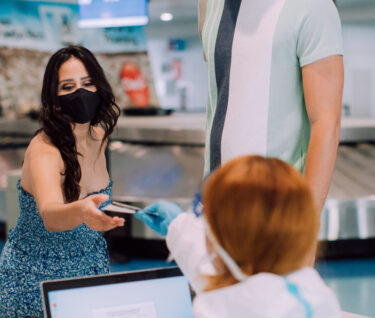
Puerto Rico Travel Protocols and COVID-19 Updates

Updated March 10, 2022
Travel to Puerto Rico just became a lot smoother. As of March 10, all pandemic-era protocols for domestic travelers have been lifted, providing even more incentive to visit the Caribbean island territory.
Travelers visiting from the mainland U.S. are no longer required to provide proof of vaccination, a negative COVID-19 test, or complete a travel declaration form before their journey.
“Traveling to Puerto Rico is becoming easier as the island continues to lead vaccination efforts and contagion rates continue to decrease,” said Brad Dean, CEO of Discover Puerto Rico, the island’s direct marketing organization.
Puerto Rico will also eliminate its mask mandate and simply advise masks be worn in high-risk settings. Additionally, proof of vaccination or a negative test is no longer required to enter hotels, restaurants, sporting venues and other businesses. Individual establishments remain free to implement their own vaccination requirements and mask mandates.
With one of the highest vaccination rates in the U.S., at over 85%, and plenty of opportunities to get outdoors, Puerto Rico has been one of the safest travel destinations during the pandemic.
Governor Pedro Pierluisi’s new executive order follows a loosening of restrictions announced in January this year. The previous order eliminated pre-arrival COVID-19 testing requirements for vaccinated travelers and allowed unvaccinated travelers to skip quarantine with evidence of a certified negative test taken within the previous two days.
Note that one restriction still remains for international travelers. Regardless of vaccination status, all visitors to the mainland U.S. and its territories must still show proof of a negative COVID-19 test — PCR or antigen — taken within one day of departure.
Common Questions:
As a domestic traveler, do I still need to take a COVID-19 test?
No, all restrictions for domestic travel have now been eliminated.
As an international traveler, what protocols do I need to follow to enter Puerto Rico?
The only remaining requirement for international travelers is to take a COVID-19 test — PCR or antigen — within one day of their departure, regardless of vaccination status.
Do I still need to wear a mask indoors?
There is no longer a mask mandate in place. Visitors can use their own discretion according to the venue and their vaccination status.
Are there any limitations in place for indoor venues ?
Capacity limits have been removed for both private and public establishments (indoors and outdoors) including restaurants, bars, theaters and event venues. Only events that involve more than 1,000 attendees will need to follow vaccination and mask protocols outlined by the health department.
Do I still need to complete the travel declaration form?
No, neither domestic or international travelers are required to complete the travel declaration form prior to travel.

Puerto Rico to drop COVID-related entry requirements for US travelers
Puerto Rico this week is dropping nearly all travel-related COVID-19 restrictions for domestic travelers from the U.S. as case counts on the island continue to fall.
Starting Thursday, domestic visitors from the U.S. will no longer need to show proof of vaccination or a negative coronavirus test to enter.
Masks will no longer be required in indoor or outdoor venues, with some exceptions, Governor Pedro Pierluisi announced Monday . Certain areas, such as health facilities, will still require face coverings.
Officials recommend that people continue to wear masks indoors when the vaccination status of others is unknown. Travelers will also still need to wear a mask on the plane ride to Puerto Rico because the U.S. federal mask mandate is in effect until at least March 18.
MASK MANDATE ON PLANES: Yes, masks are still required on planes and at airports despite new CDC mask guidelines
Learn more: Best travel insurance
Puerto Rico is also lifting all capacity restrictions. Currently, certain indoor venues like restaurants, bars, theaters and stadiums must cap capacity at 75%. The Health Department will continue to issue special protocols for events with more than 1,000 attendees.
Additionally, businesses like restaurants and bars will no longer need to screen customers for proof of vaccination or a negative coronavirus test before allowing entry.
"Individual establishments reserve the right to implement their own requirements surrounding masks and COVID-19 protocols, and visitors are encouraged to contact businesses directly," reads a statement from the destination marketing organization Discover Puerto Rico.
Travelers will no longer need to fill out a travel declaration form – which included information on their vaccination status or coronavirus test results – before exiting the airport in Puerto Rico. Airports will continue to offer centers for voluntary coronavirus testing.
Most travelers entering from outside the U.S. will still need to show proof of vaccination to enter the U.S. territory.
Reported COVID-19 cases in Puerto Rico have been declining since early January, and the island is now reporting a seven-day average of fewer than 250 cases a day – a fraction of the 10,000-plus reported at the beginning of the year, according to data from Johns Hopkins University .
Follow USA TODAY reporter Bailey Schulz on Twitter: @bailey_schulz .
Puerto Rico Travel Restrictions: What Travelers Need To Know
Puerto Rico has used a multi-pronged approach to the pandemic by using tactics from masks to curfews. While most of the rules have been lifted, Puerto Ricans still take the virus seriously; more than 95% of the population has received at least one dose of a COVID vaccine.
This guide lets travelers know what to expect when traveling to Puerto Rico, and what it’s like on the island once you arrive. It’s still possible to have an absolutely incredible adventure on the Island of Enchantment — you just need to prepare a little bit differently than you would have pre-pandemic.
And as for Hurricane Fiona, the island has largely recovered. The airport is open as normal and only a handful of outdoor destinations are still closed.
For the best up-to-date info about Puerto Rico COVID travel restrictions, post-hurricane travel, and the island itself, talk to a local . Our locals in Puerto Rico can offer one-on-one advice about traveling to the island. Learn more .
Table of Contents
Is it safe to travel to puerto rico right now, puerto rico travel restrictions to know before your arrival, what to expect on a trip to puerto rico, why travel to puerto rico right now.
- Work With A Local To Plan Your Trip To Puerto Rico
As COVID travel restrictions go, Puerto Rico is fairly easy to visit. But is Puerto Rico safe ?
Like any destination at the moment, travel to Puerto Rico comes with elevated risks — especially if you’re unvaccinated. But the island has had an aggressive response to the pandemic.
One of the first jurisdictions to issue a mask mandate, Puerto Rico has also used curfews, closures, and capacity rules to keep cases at bay. Like most other places, it has had waves of the virus which have peaked at different points.
So what does it take to travel to Puerto Rico right now ? What sort of COVID travel policies does the island have in place? What should travelers expect once they arrive on the island? Keep reading to find out.
Puerto Rico does not have a vaccine mandate for domestic arrivals or require Americans to present a negative COVID test.
Travelers from abroad must present proof of COVID vaccination to visit Puerto Rico for tourism.
While Puerto Rico previously required weekly testing, proof of vaccination to visit restaurants, and had curfews for non-essential businesses, travel is now close to pre-pandemic normal. If you’ve heard about these requirements, they were likely true in 2021, but now you can travel much more freely.
However, you’ll still want to pack your mask and vaccination card because individual businesses are allowed to implement their own mask, vaccine, and testing rules.
The bottom line: expect to have fun but respect local rules and procedures, which may be more strict than what’s listed here. A local in Puerto Rico can help you find out if the places you’re going to in Puerto Rico have stricter rules than the island as a whole.
As pandemic destinations go, Puerto Rico is hard to beat. Packed with hidden gems , gorgeous beaches , and fantastic hikes , travelers will find plenty of activities away from big crowds. Most activities are in the open air, and people in Puerto Rico also take the pandemic very seriously.
Traveling to Puerto Rico is also an excellent way to help locals recover from the pandemic and Hurricane Fiona. Much of the island’s economy relies on tourism; the more you put your travel dollars in local hands, the more it helps.
As for where to go on the island, San Juan is fantastic — Puerto Rico’s capital city offers plenty to do, including easy access to the island’s most fascinating landmarks . If you’re looking for nightlife, great restaurants, and a town that tingles with history, this is the place to go.
But there are also tons of places in Puerto Rico to visit off the beaten path. Take the town of Ponce . Puerto Rico’s second-largest town, Ponce is less crowded than San Juan but offers a similar collection of history, great restaurants, and access to nature.
Island locals tell us that one of the best things to do in Ponce is to hop on a ferry and visit one of the uninhabited islands nearby. If you’re looking to escape the crowds, there’s nothing better than somewhere like Caja de Muertos, an island with no people but plenty of birds and turtles just off the coast of Ponce.
And that’s just one of the wonderful outdoor activities on the island . Locals say you can also go surfing along the coast of Rincon (where you might catch a glimpse of a humpback whale) or hike up to the breathtaking Rio Camuy Cave Park in Quebrada.
Work With A Local To Plan Your Trip To Puerto Rico
At the end of the day, no one knows a place like the people who live there. Local knowledge can always enrich a trip, but it’s especially crucial now that we are living with COVID . A local can give you the most recent updates and their honest views on island life today.
Plus, they can recommend things to do to fit your travel style , whether that’s drinking rum in Ponce, hiking in the rainforest, or seeking out the best Puerto Rican food on the island.
Ready to have a local plan your trip to Puerto Rico? Connect with a local today to learn more.
Curious about other destinations? Check out our articles COVID-19 travel restrictions in Italy , Portugal , Spain , Costa Rica , France , and Cuba . Or better yet, talk to a local in the destination you want to visit.
Looking for more info?
In partnership with SSA Education Abroad
- Watch the Alandis Travel introduction
- Reach out to us at [email protected]

COVID-19 Travel Restrictions: Puerto Rico
Resource: Puerto Rico Tourism Company web
Date of last revision: August 2022.
Latest Updates
Puerto Rico has one of the highest rates of vaccine doses administered against COVID-19 among United States jurisdictions. The Island has a vaccination rate of 155,266 doses administered per 100,000 people. 95% of the eligible population have received at least one dose of the vaccine, and 87% are fully vaccinated .
However, Puerto Rico is following the measures recommended by the CDC (Centers for Disease Control & Prevention), which we will summarize below.
Flying to Puerto Rico: Entry Requirements
List of general entry requirements.
- Domestic travelers are not required to provide a negative test or proof of vaccination prior to arriving in Puerto Rico.
- International travelers that are neither U.S. citizens nor permanent residents must present proof of vaccination.
- U.S. citizens and permanent residents are not required to present a negative COVID-19 test prior to traveling.
Is a negative COVID test required for entry?
Are there health screening procedures in place at airports and other ports of entry .

Yes. The Puerto Rico National Guard assists with enhanced health screenings of all arriving passengers at each airport on the Island. All incoming travelers at the Luis Muñoz Marín International Airport in San Juan will be pre-screened via thermographic cameras to monitor temperatures, and enhanced protocols are in place at baggage claim before exiting the airport.
Is there a curfew in place?
Are there restrictions on interstate/city travel, are commercial flights operating , is public transport operating, public rules in puerto rico.

Masks are no longer mandatory on the Island with the exception of events hosting over 1,000 people. However, masks are highly recommended on all public transportation, including all ferries operating.
COVID-19 Testing in Puerto Rico
Are pcr and antigen tests available for u.s. & canadian citizens in puerto rico .
Yes. You can check here for the location of clinics in Puerto Rico.
PCR molecular testing for all travelers coming in or going out of the Island will be available for $110 and will be guaranteed results electronically within 24 to 48 hours.
If so, can you get test results reliably available within one calendar day?
Yes. If this is critical, you must confirm this with the private center you choose, but normally you can expect to receive your test upon completion or within a few hours.
For information on limited humanitarian exemptions, please review the following page :
Exemptions may be granted in extremely limited circumstances such as emergency travel (such as an emergency medical evacuation) to preserve a person’s life, protect their health from serious danger, or protect their physical safety, and screening cannot be completed before travel.
Returning Home
We recommend taking into account some considerations such as:
- Checking-in online if possible and take your boarding pass to the airport on your mobile or printed
- Arriving earlier than usual at the airport, because the security checks and check-in process may be slower than usual
- Bear in mind that some airlines have restricted the amount of cabin baggage allowed
- Wearing a face mask is mandatory throughout the airport (remember that masks with exhalation valves are not permitted)
- The airport is marked with 1.5 m social-distancing signs
- Your destination country will probably ask you for a record of your flight. We recommend checking the healthcare and documentation requirements of the country you are traveling to.
- Puerto Rico is a U.S. territory and excluded from the CDC, it is required to provide a negative COVID-19 test result to return to the mainland United States.
- Quarantine mandates, recommendations, and entry requirements may vary by country.
Useful Links:
- Travel Safe Puerto Rico
- Travel.State.Gov
- Travel and Tourism Government of Canada
- Canada Embassy in Puerto Rico
- Government of Puerto Rico information page
- Puerto Rico Government Health Portal
Other links:
- COVID-19 crisis page on travel.state.gov
- CDC page on COVID-19
- Puerto Rico Tourism Company (PRTC)
- COVID-19 Aid and Resources for the Travel and Tourism Sector
- San Juan Airport website
- Our World in Data
For destination-specific COVID-19 regulations, choose from one of the below options
- General Restrictions
Looking to organise a trip?
- High Schools
- Universities
- Adult-learner groups
- Study abroad providers
Request More Info
Calle Harinas, 18. Sevilla, 41001. Spain
(US) +1 646 504 2897 (ES) +34 650 749 180
[email protected]

Connect with us
Seals of quality.

Alandis Travel
- About our company
- News, Guides & Travel Resources
- Experiences
- Tailor-made Programs
- COVID-19 Restrictions
- Press Package
Programs for you
- Group Travel for Adults
- Guided Tours of Spain
- Guided Tours of Cuba
- Guided Tours of Puerto Rico
Tours by Theme
- Architecture
- Art & Literature
- Food & Wine
- Hands-on Experiences
- Hiking & Outdoors
- Historical Relevance
- Nature & Wildlife
- People, Culture & Traditions
- Social Projects
- UNESCO Heritage Sites
©2024 Alandis Travel | Wholesale Tour Operator & Study Abroad Company in Spain, Cuba & Puerto Rico | All Rights Reserved.
Receive your brochure
Where should we send you the brochure?
Understanding Puerto Rico's Latest Travel Restrictions: What You Need To Know
- Last updated Sep 23, 2023
- Difficulty Intemediate
- Category United States
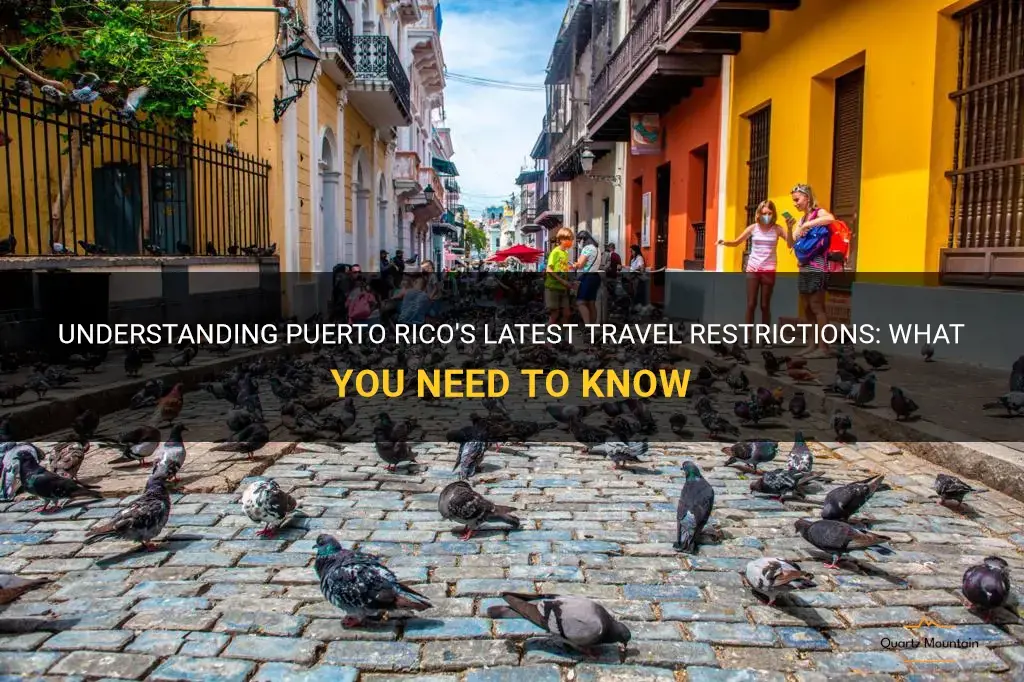
Attention all travelers! If you're planning a visit to the beautiful island of Puerto Rico, you'll want to stay up to date on the latest travel restrictions. As with many destinations around the world, Puerto Rico has implemented certain measures to ensure the safety and well-being of its residents and visitors. Whether you're dreaming of exploring the historic streets of Old San Juan or soaking up the sun on the pristine beaches, it's important to know what to expect before you go. So, grab your passport and let's dive into the latest travel restrictions to Puerto Rico!
What You'll Learn
What are the current travel restrictions to puerto rico, are there any specific requirements or documentation needed to enter puerto rico, are there any quarantine or testing requirements for travelers arriving in puerto rico, are there any specific restrictions for international travelers coming to puerto rico, are there any travel advisories or warnings for puerto rico that travelers should be aware of.

With the ongoing COVID-19 pandemic, travel restrictions have been put in place by many countries, including the United States and its territories. Puerto Rico, as a US territory, also has its own travel restrictions in place to ensure the safety of residents and visitors. Here is an overview of the current travel restrictions to Puerto Rico.
COVID-19 Testing Requirements:
All travelers to Puerto Rico, regardless of their vaccination status, are required to present a negative COVID-19 test result taken within 72 hours prior to arrival. The accepted types of tests include PCR tests and antigen tests. The test result must be uploaded to the Puerto Rico Health Department's online portal, which can be accessed at travel.pr.gov.
Vaccinated travelers have the option to provide proof of full vaccination (two weeks after the final dose) instead of a negative test result. Acceptable proof of vaccination includes the CDC COVID-19 Vaccination Record Card or a digital equivalent.
Quarantine Requirements:
As of now, there is no mandatory quarantine requirement for travelers to Puerto Rico who provide a negative test result or proof of vaccination. However, travelers who arrive without a test result or proof of vaccination will be required to quarantine for 14 days or until they receive a negative test result on the island.
Mask Mandate and Other Health Protocols:
While in Puerto Rico, all individuals aged two and older are required to wear a mask in indoor public spaces regardless of vaccination status. Masks are also required in crowded outdoor settings where social distancing is not possible.
Travelers should also adhere to other health protocols, such as practicing good hand hygiene, maintaining social distancing whenever possible, and being aware of their health status during their stay in Puerto Rico.
These travel restrictions and protocols are subject to change based on the evolving COVID-19 situation in Puerto Rico and the United States. Travelers are advised to check for any updates before their trip and follow the guidelines provided by local authorities.
It is also worth noting that while the current travel restrictions may deter some visitors, Puerto Rico's tourism industry is gradually reopening and welcoming travelers who comply with the necessary requirements. The island offers a rich blend of culture, history, and natural beauty, making it a desirable destination for those looking for a tropical getaway.
France to Thailand Travel Restrictions: What You Need to Know
You may want to see also
Puerto Rico is a territory of the United States, so travelers from the mainland United States do not need a passport to enter. However, there are some specific requirements and documentation that you may need to enter Puerto Rico.
Firstly, it is important to note that even though Puerto Rico is part of the United States, it is still considered an international destination for immigration purposes. This means that visitors from countries outside the United States will need to have a valid passport in order to enter Puerto Rico.
For US citizens and legal permanent residents, a valid photo ID such as a driver's license or passport card is generally sufficient for travel to Puerto Rico. However, it is always a good idea to carry a valid passport when traveling internationally, including to Puerto Rico, in case of any unforeseen circumstances or changes in travel requirements.
If you are traveling to Puerto Rico from a country other than the United States, you will typically need a valid passport and may also be required to obtain a visa from the US Embassy or Consulate in your home country. It is important to check with the relevant embassy or consulate for specific visa requirements and processing times before making any travel plans.
Additionally, all travelers to Puerto Rico are required to fill out a Customs Declaration Form upon arrival. This form collects information about the items you are bringing into the country, including any goods that may be subject to customs duties or restrictions. It is important to accurately complete this form and declare any items that are required to be declared.
It is also a good idea to have a copy of your itinerary and any hotel reservations or other travel documentation on hand when traveling to Puerto Rico. While it may not be strictly required, having this documentation readily available can help expedite the immigration and customs process.
In conclusion, while travelers from the mainland United States do not need a passport to enter Puerto Rico, there are some specific requirements and documentation that may be necessary depending on your citizenship and country of origin. It is always recommended to check with the US Embassy or Consulate for the most up-to-date information before traveling to Puerto Rico.
The Ever-Evolving Landscape of Travel Restrictions: What You Need to Know
Due to the ongoing COVID-19 pandemic, many countries and regions have implemented travel restrictions and guidelines to prevent the spread of the virus. In the case of Puerto Rico, there are certain quarantine and testing requirements for travelers arriving on the island.
As of September 24, 2021, the government of Puerto Rico has announced new guidelines for travelers visiting the island. Fully vaccinated travelers are not required to quarantine upon arrival, but there are certain testing requirements they must meet.
Vaccinated Travelers:
Fully vaccinated travelers who can provide proof of vaccination are not required to quarantine upon arrival. However, they must provide one of the following:
- Vaccination Record Card: Travelers must provide their vaccination record card showing they have received a complete dose of an approved COVID-19 vaccine at least two weeks prior to travel.
- Digital Health Pass: Travelers can also provide a digital health pass, such as Puerto Rico's health pass through the SYR app or a comparable app, to show proof of vaccination.
Unvaccinated or Partially Vaccinated Travelers:
Unvaccinated or partially vaccinated travelers must comply with the following requirements:
- Pre-Travel Testing: Travelers must provide a negative COVID-19 test result taken within 72 hours before arrival in Puerto Rico. The accepted tests are PCR or Antigen tests.
- Testing upon Arrival: Upon arrival in Puerto Rico, unvaccinated travelers will be required to take a rapid antigen test at the airport. The cost of the test is covered by the government for non-residents.
- Quarantine: Unvaccinated or partially vaccinated travelers who test negative will be required to follow a self-quarantine for a period of seven days or until they receive a negative result from a second test taken after at least five days of arrival.
It's important to note that these requirements are subject to change and travelers should check the official government sources for the most up-to-date information before their trip.
In addition to the testing and quarantine requirements, travelers are also required to complete a Travel Declaration Form and a proof of vaccination form (for fully vaccinated travelers) through the official Puerto Rico Health Department's website before arrival.
Travelers should also be aware that other health and safety measures, such as wearing masks in public places and practicing social distancing, are still in place in Puerto Rico to prevent the spread of COVID-19.
In conclusion, while fully vaccinated travelers are not required to quarantine upon arrival in Puerto Rico, there are certain testing requirements they must meet. Unvaccinated or partially vaccinated travelers, on the other hand, are subject to pre-travel testing, testing upon arrival, and a quarantine period. It's important for travelers to stay informed about the latest guidelines and requirements before planning their trip to Puerto Rico.
Connecticut Implements International Travel Restrictions in Response to COVID-19
As an unincorporated territory of the United States, Puerto Rico follows the same entry requirements as the mainland United States for international travelers. However, there are some specific restrictions and guidelines for international travelers coming to Puerto Rico.
Firstly, all international travelers, including those coming from the United States, must present a negative COVID-19 molecular test result taken no more than 72 hours before arrival. Alternatively, travelers can present a positive antigen test result taken no more than 48 hours before arrival, along with a negative COVID-19 molecular test result taken no more than 72 hours before arrival.
Additionally, all international travelers, regardless of vaccination status, are required to complete an online Travel Declaration Form from the Puerto Rico Health Department. This form includes contact information, travel information, and a self-assessment of COVID-19 symptoms. Travelers must also upload their negative COVID-19 test results or vaccination cards to the form.
It is important to note that Puerto Rico follows the Centers for Disease Control and Prevention (CDC) guidelines regarding travel and COVID-19. Thus, it is advisable to check the CDC website for any updated guidelines or recommendations before traveling to Puerto Rico.
Moreover, Puerto Rico has implemented a travel advisory system called "Discover Puerto Rico's Safe Travels." This initiative provides information and guidelines to travelers to ensure their safety and well-being while visiting the island. Travelers are encouraged to follow safety protocols such as wearing masks, practicing social distancing, and maintaining good hygiene practices during their stay.
In addition to the above restrictions, it is essential to check with the airline or flight operator for any specific requirements or guidelines they may have in place for international travelers to Puerto Rico. Airlines may have their own testing or vaccination requirements for passengers.
Overall, international travelers coming to Puerto Rico are subject to specific restrictions and guidelines, including the presentation of a negative COVID-19 test result, completion of an online Travel Declaration Form, and adherence to safety protocols. It is crucial for travelers to stay updated on the latest travel advisories and guidelines to ensure a safe and hassle-free trip to Puerto Rico.
Understanding FAA Restricted Travel Items: What You Can and Cannot Bring on a Plane
Puerto Rico is a beautiful island in the Caribbean that attracts millions of tourists each year. However, like any travel destination, there are certain travel advisories and warnings that travelers should be aware of before visiting. These advisories are put in place to ensure the safety and well-being of travelers.
As of the time of writing this article, the U.S. Department of State has not issued any travel advisories or warnings specifically for Puerto Rico. This means that it is generally safe to travel to the island. However, it is always a good idea to stay informed about the current situation and check for any updates before making any travel plans.
One thing to keep in mind while traveling to Puerto Rico is that it is an unincorporated territory of the United States. This means that the same safety and security standards that apply in the United States also apply in Puerto Rico. Travelers should exercise the same level of caution and follow the same safety guidelines as they would in any U.S. city.
It is also worth noting that Puerto Rico has experienced a significant increase in crime in recent years. While violent crime rates are relatively low compared to some other Caribbean islands, travelers should still take precautions to stay safe. These precautions include avoiding dangerous areas, especially at night, and keeping a close eye on personal belongings.
Another potential concern for travelers is the weather. Puerto Rico is located in a hurricane-prone region, and it has been hit by several major hurricanes in recent years. Travelers should be aware of the hurricane season, which typically runs from June to November, and monitor weather forecasts and advisories before and during their trip.
In addition to these general advisories, travelers should also be mindful of any health advisories or warnings that may be in place. Puerto Rico, like many other tropical destinations, is at risk for certain diseases, such as Zika virus and dengue fever. Travelers should take appropriate precautions, such as using insect repellent and wearing protective clothing, to minimize their risk of contracting these diseases.
Overall, while there are no specific travel advisories or warnings for Puerto Rico at the moment, it is still important for travelers to stay informed and take necessary precautions to ensure a safe and enjoyable trip. By following common-sense safety guidelines and staying aware of any updates or changes in the situation, travelers can have a wonderful experience exploring all that Puerto Rico has to offer.
Update on Travel Restrictions: Philippines Outbound Travel Policies Explained
Frequently asked questions.
As of the most recent update, Puerto Rico does not have any travel restrictions in place for domestic travelers coming from the United States. However, travelers are still encouraged to follow CDC guidelines and take necessary precautions to ensure their safety and the safety of others.
Yes, there are travel restrictions in place for international travelers coming to Puerto Rico. All international visitors aged 2 and older must provide proof of a negative COVID-19 test taken within 72 hours prior to arrival. If a test result is not available, travelers must quarantine for 14 days or until they receive a negative test result on the island.
A quarantine is not required for domestic travelers coming from the United States. However, international travelers who do not provide proof of a negative COVID-19 test result must quarantine for 14 days or until they receive a negative test result on the island.
In addition to providing a negative COVID-19 test result for international travelers, it is also required to fill out a travel declaration form through the Puerto Rico Health Department's online portal. This form will collect necessary information for contact tracing purposes and must be completed prior to arrival in Puerto Rico.

- Susan Meyers Author

- Elani Piper Author Editor Reviewer
It is awesome. Thank you for your feedback!
We are sorry. Plesae let us know what went wrong?
We will update our content. Thank you for your feedback!
Leave a comment
United states photos, related posts.

13 Fun Things to Do in Greer, SC
- May 07, 2023

10 Fun Night Activities to Experience in Cape Cod
- May 22, 2023

13 Awesome Things to Do in Cleveland Memorial Day Weekend

13 Exciting Things to Do in Denver for the 4th of July

13 Exciting Activities to Experience in Putnam County

11 Amazing Things to Do with Kids in Hallstatt
- May 12, 2023
13 things to know before you head to Puerto Rico

Nov 30, 2023 • 10 min read
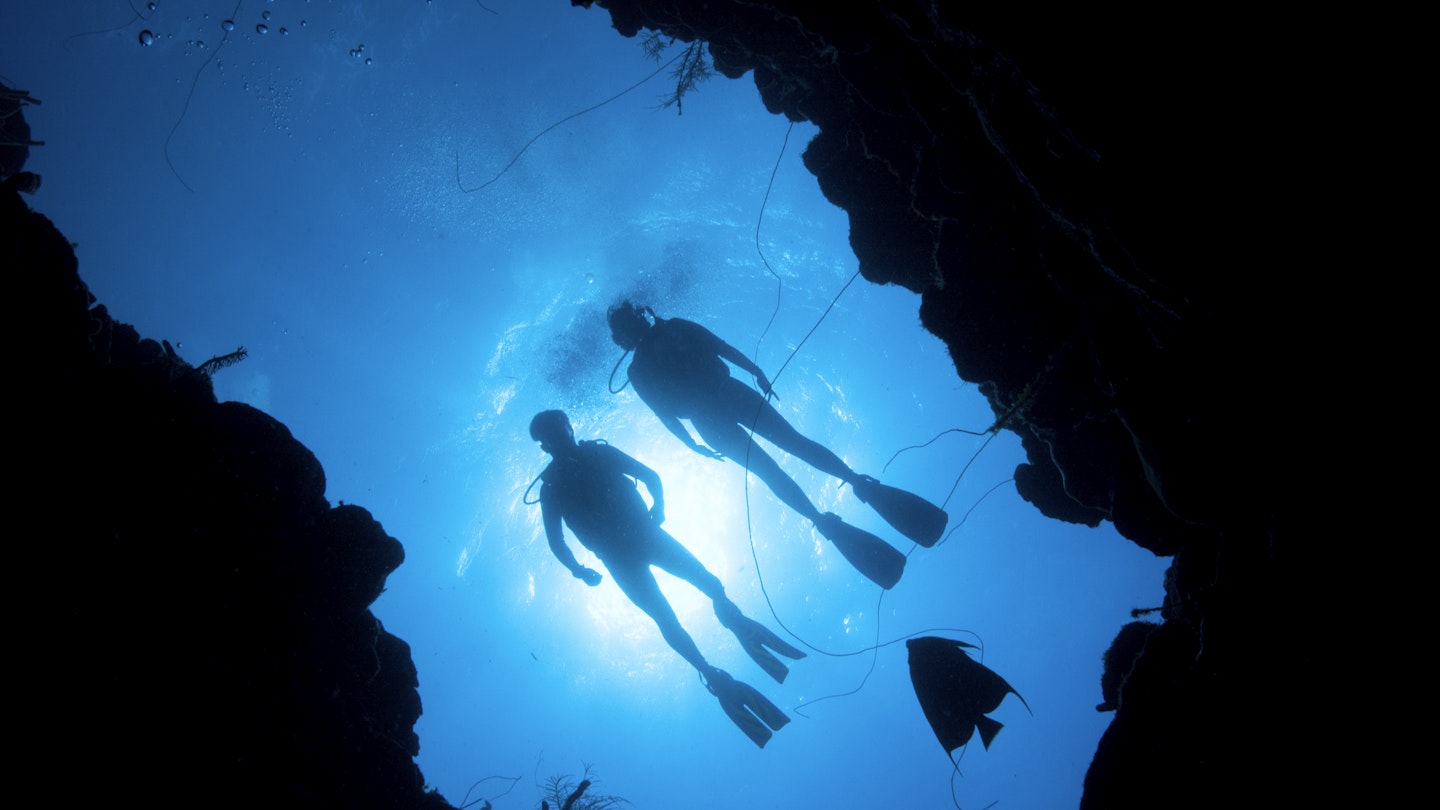
Don't just dive right in! A little local knowledge can help you on your way to a perfect trip to Puerto Rico © Stephen Frink / Getty Images
With breathtaking oceanfront vistas, lush, breezy mountains, tropical rainforest, some pumping nightlife and one of the coolest food scenes in the Caribbean, a Puerto Rico vacation is all about enjoying the ride.
Learning a few of the island's unspoken social rules will go a long way to helping you enjoy the vibe and understanding what makes Puerto Rico such a memorable spot for your vacation.
So whether you're hiking, surfing, zip-lining, boogie boarding or heading to one of the island's many festivals, here are our top tips on planning, etiquette and health and safety in Puerto Rico.
1. Check the visa rules and passport requirements
While Puerto Rico is its own country, and local laws and customs differ from those of the United States, the island is still a Commonwealth of the USA. This means US citizens don’t require a passport or a visa for entry.
Flights from the US are considered domestic, so you won’t go through customs when you arrive on the island and you won’t need to present a visa or pay a departure tax when you leave.
However, visitors must still pay the local tax of 11.5% on goods and services and you’ll be required to pass through the US Department of Agriculture channel at the airport before you leave, just to make sure you don’t bring fruits or vegetables or open food packets back into the US.
Non-US citizens taking a trip to Puerto Rico may need to apply for a 90-day visa before arrival, but countries that are part of the US Visa Waiver Program won’t need a visa thanks to international agreements. Check out this list to see what countries are part of the program and which have visa requirements.

2. Rent a car for long-distance road trips when traveling in Puerto Rico
When planning a trip to Puerto Rico, it's necessary to know that public transportation often falls short. Keep this in mind when planning how long you want to stay.
The bulk of the San Juan metropolitan area – comprising the municipalities of San Juan, Bayamón, and some parts of Carolina – is served by buses run by Autoridad Metropolitana de Autobuses (AMA), but the routes and pick-up times are unreliable.
A road trip to the beautiful central mountain range, the beaches of the northwest, or the southwestern desert requires a rental car.
Cars can go up or down in price depending on the season , but you’ll get more out of your trip if you’re driving as you can make all the stops you need to take photographs at the amazing miradores (lookout points) sprinkled along Expressway 22 in the north or Route 66 in the northwest.
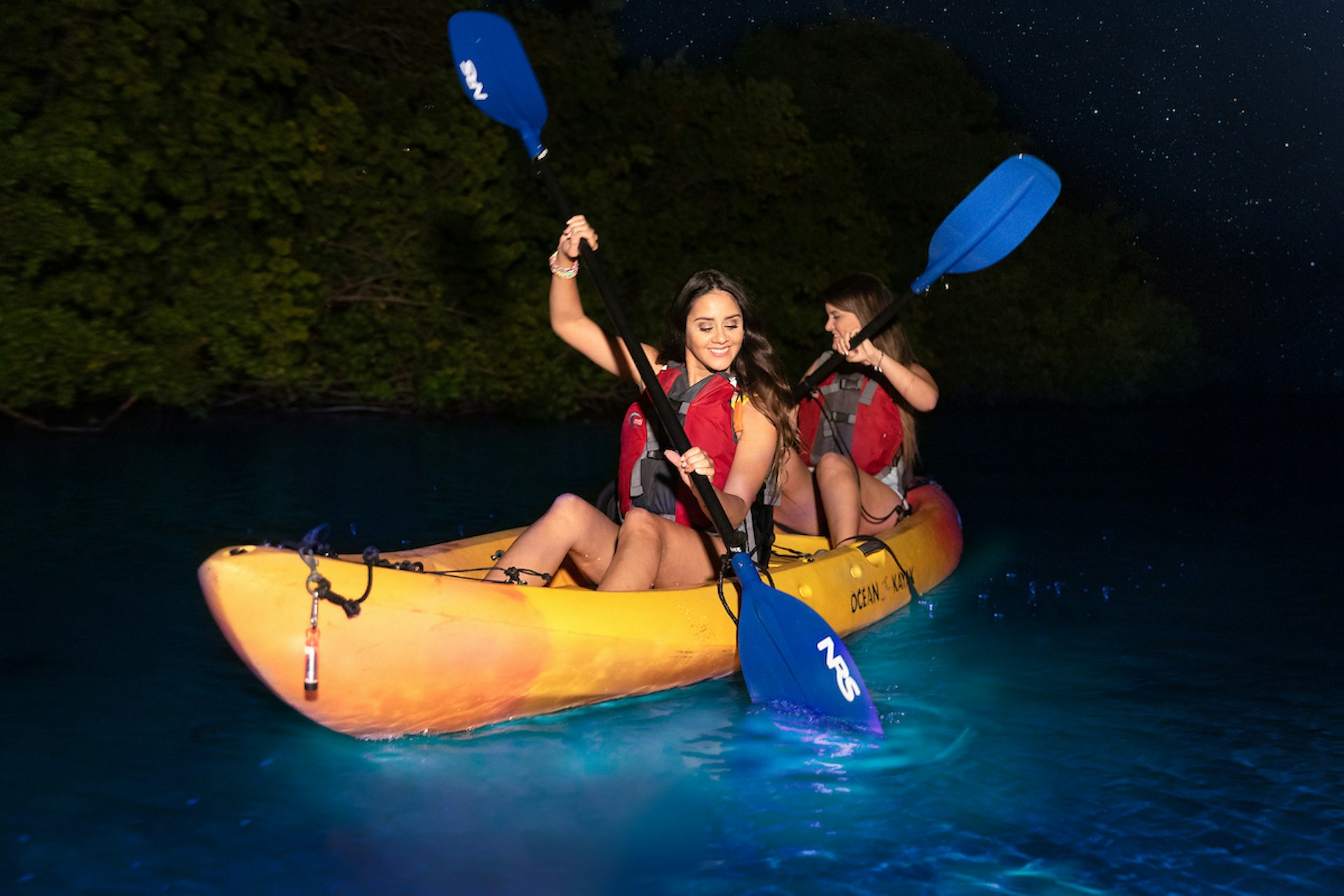
3. Don’t expect to see the whole island in one trip
Puerto Rico is 100 miles long and 35 miles wide, but don't let that fool you – the geography is anything but small in scale and there are many things you'll want to do while you're there. The island has a surface area of 3515 sq miles, and white, sandy beaches are only one of the natural wonders you’ll experience in Puerto Rico.
Visitors can marvel at bioluminescent bays, caves that are thousands of years old and adorned with Taino hieroglyphics, and a wealth of rivers, canyons, high mountain peaks, and salt flats.
While a lot of tourist attractions and popular bars are in San Juan, real Puerto Rican culture is often best encountered in places outside of the metropolitan area. It can take up to three hours to get from one side of the island to the other, and there are bound to be some roads that are either closed or temporarily closed for repairs.
Traveling from one end of the island to the other can be a breeze if you use the expressways, or it can be a long rollercoaster ride via the island’s beautiful backroads.
Expect delays due to construction and improvement work along major highways, and be prepared for epic traffic jams during the peak commuter hours, from 6am to 9am and 4pm to 7pm.
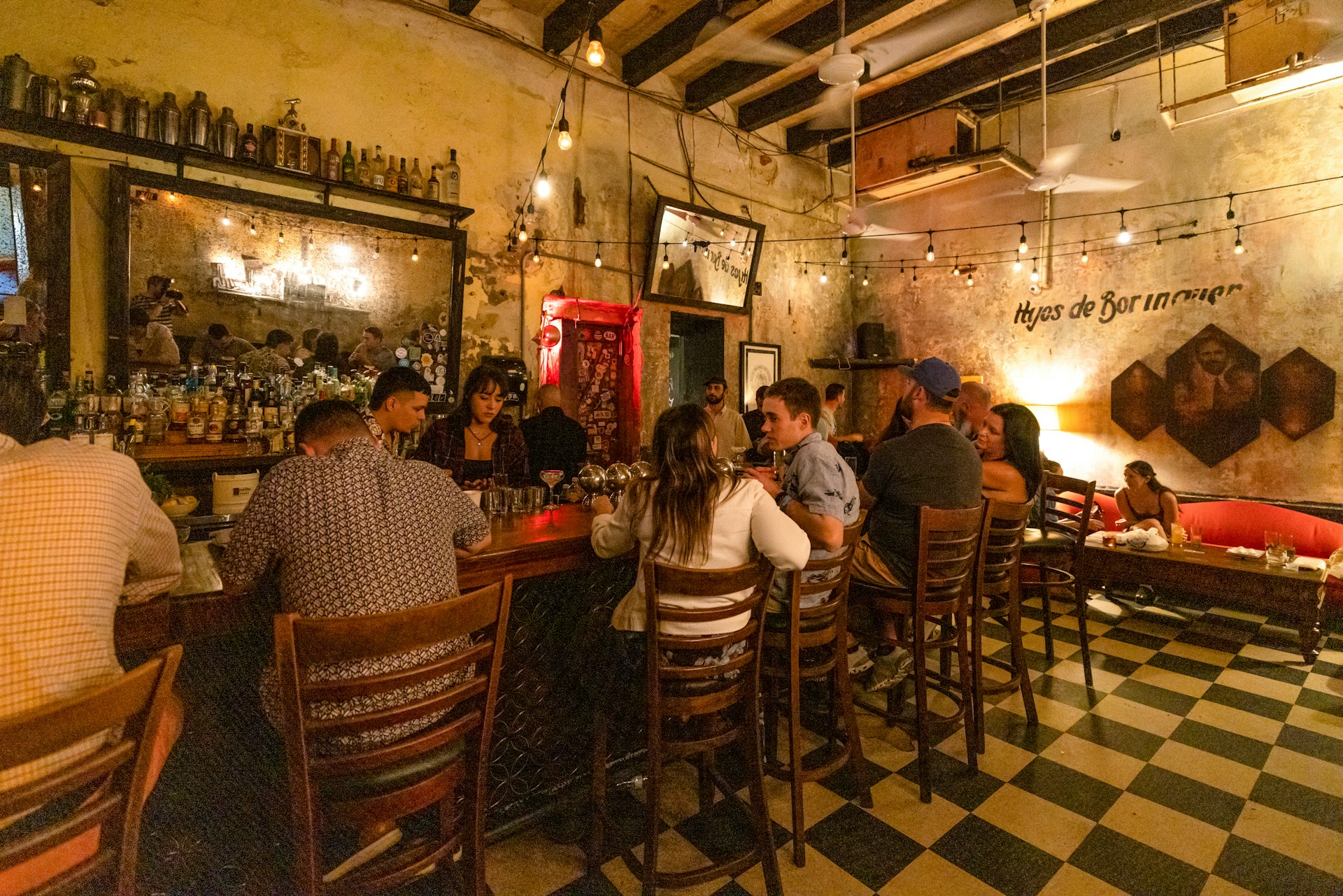
4. Pack bathing suits and your Sunday best
As a former Spanish colony, Puerto Rico was left with a legacy of Spanish colonial practices, including widespread Catholicism, also common in other nearby Latin American countries such as Cuba and the Dominican Republic .
Perhaps unsurprisingly, Puerto Ricans tend to be quite conservative when it comes to dress codes and the places where these apply. In Old San Juan – where the governor’s mansion, La Fortaleza is located – it’s common to see workers in full suits or long shirts regardless of the tropical heat.
Flip flops are usually reserved for the beach or super-casual situations, such as trips to kiosks and beachside restaurants, or riverside walks. You’ll stick out like a sore thumb if you show up at the main mall, Plaza las Américas , in your swimsuit.
Some clubs have dress codes too, requiring men and women to wear smart shoes. Pack your bathing suit and flip flops, but also bring some dressy outfits for going out at night and clothes that cover the knees and shoulders if you plan to visit any religious sites.
5. Buy tickets ahead for tours and attractions
If you’re planning to join a snorkeling trip, go on a catamaran tour, or eat at the 1919 Restaurant in the Vanderbilt Hotel , book your spot ahead of time. Trust us, planning ahead will be a game-changer.
6. Don’t expect everyone to speak English
Regardless of Puerto Rico’s modern political status, Spanish remains the language most widely spoken on the island. While you’ll find plenty of Puerto Ricans who speak near-perfect English, you're most likely to meet these people in the metropolitan area and peripheral cities such as Caguas, Bayamón, Guaynabo, Carolina, and Trujillo Alto.
Even in Old San Juan, where restaurant and tourism industry workers will speak to you in English without a problem, it’s considerate to ask someone if they speak English before continuing. If you're venturing outside of the main tourist zones, brush up on your Spanish, be patient and courteous and you’ll make fast friends with island residents.

7. Discuss politics with care
Conversations about the island's political situation can get heated and emotional – the subject of the islands' status is a controversial one, and Puerto Ricans' views vary widely.
The best approach is to come to these conversations with an open mind and remember that Puerto Rican politics and US politics are incredibly different. There's much to be gained by just listening to Puerto Ricans' stories and hopes for what they want to see the island become in the future.

8. Be ready to sample the full range of Puerto Rican cuisine
Don’t let the tasty street snacks – pernil (roast pork), alcapurrias (stuffed, fried fritters), and bacalaitos (codfish fritters) – steal all your attention. While these traditional and delicious foods are prevalent, Puerto Rican cuisine is vast and complicated, with influences that range from West Africa to Spain and Asia.
You’ll find vegetarian-friendly restaurants such as vegan cafe El Grifo in Caguas and 100% HP in San Juan. Then there's the fine dining experience at the internationally renowned 1919 Restaurant inside the Vanderbilt Hotel in Condado or the French restaurant Trois Cent Onze .
Puerto Rico has a host of extraordinarily talented home-grown chefs and wonderful influences from other countries, such as the island's ubiquitous Puerto Rican-Chinese restaurants, which are typically family-run and cozy. Come for the mofongo (mashed fried plantains) and pernil , but stay for the surprising breadth of culinary experiences that await in Puerto Rico.
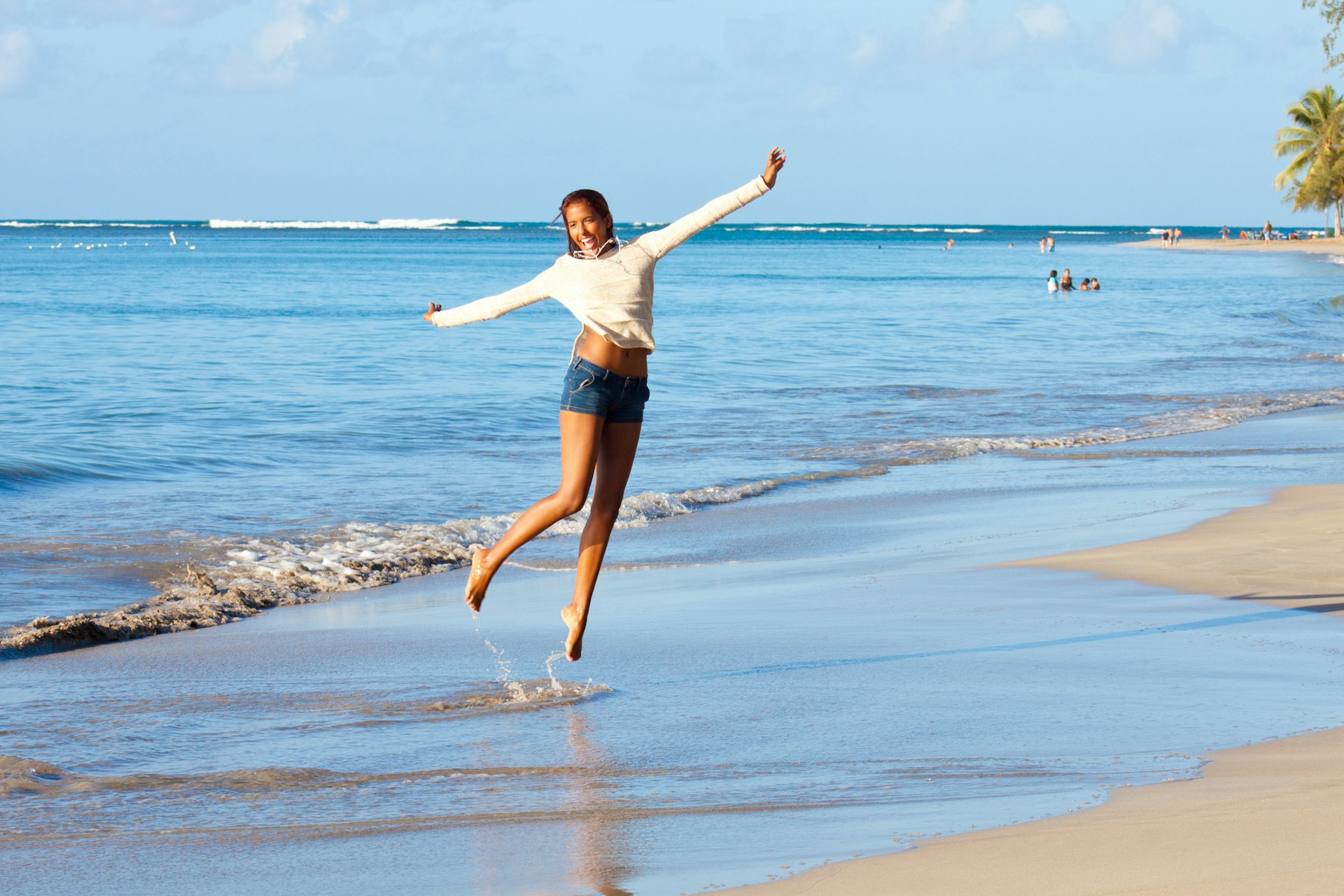
9. Be ready for the real “island time”
It’s tempting to think of Puerto Rico as a laid-back escape where the majority of the time is spent going to the beach or hanging around in the sun. The reality is that the island is centered on a busy, metropolitan city, with people rushing to work early in the morning, and traffic jams at the end of long workdays.
If you need to do any errands, plan ahead, because government offices, fast food restaurants, bakeries, and supermarkets will almost always have long lines. Making a scene or looking exasperated because the cashier took a little bit more time than usual will most likely earn you some dirty looks.
You’re on vacation; enjoy the slower pace and go with the flow. You’ll soon learn the art of Puerto Rican small talk and taking a breather while you wait.

10. Be aware of the hurricane season
Hurricane season in the Caribbean runs from June 1 to November 30, and while Puerto Rico isn’t typically hit by hurricanes, when they do hit, they can be devastating. When booking hotels and plane tickets during hurricane season, always check with your airline about their natural disaster policies.
If you get stuck in Puerto Rico during a hurricane, your hotel will likely have an emergency plan. Tourists are well taken care of on the island, so ask your lodging about contingency measures before you go.
This is not to say you can’t travel during the hurricane season – indeed, June to November is one of the most wonderful seasons on the island. Just keep an eye on the news and monitor your favorite weather app for warnings of approaching storms.

11. Exercise caution on Puerto Rico's beaches
Beaches in Puerto Rico are beautiful, with crisp white sand and crystal clear waters for all to enjoy. However, there are usually no lifeguards on duty, and if you’re staying on the Atlantic coast in the north, the ocean tends to be choppier compared to the mild waves of the Caribbean in the south.
You can usually spot rip currents and whirlpools by the appearance of the surface of the water, which will look different from the water where waves are moving towards the beach.
Don’t panic if you do get caught in one – the National Oceanic and Atmospheric Administration (NOAA) recommends conserving your energy and swimming parallel to the shore until you get out of the current. While rip currents can be deadly, they rarely pull people under the water, just away from the shore.
Exercise caution when swimming with children and if you see a patch of water or a beach that’s completely empty, that’s usually for a reason. This could be jellyfish, spiky sea urchins, or strong undercurrents.
When visiting the beach, don’t bring flashy jewelry, expensive cameras, or leave purses out in the open, as pickpockets can be an issue on high-traffic tourist beaches such as Ocean Park and Isla Verde.
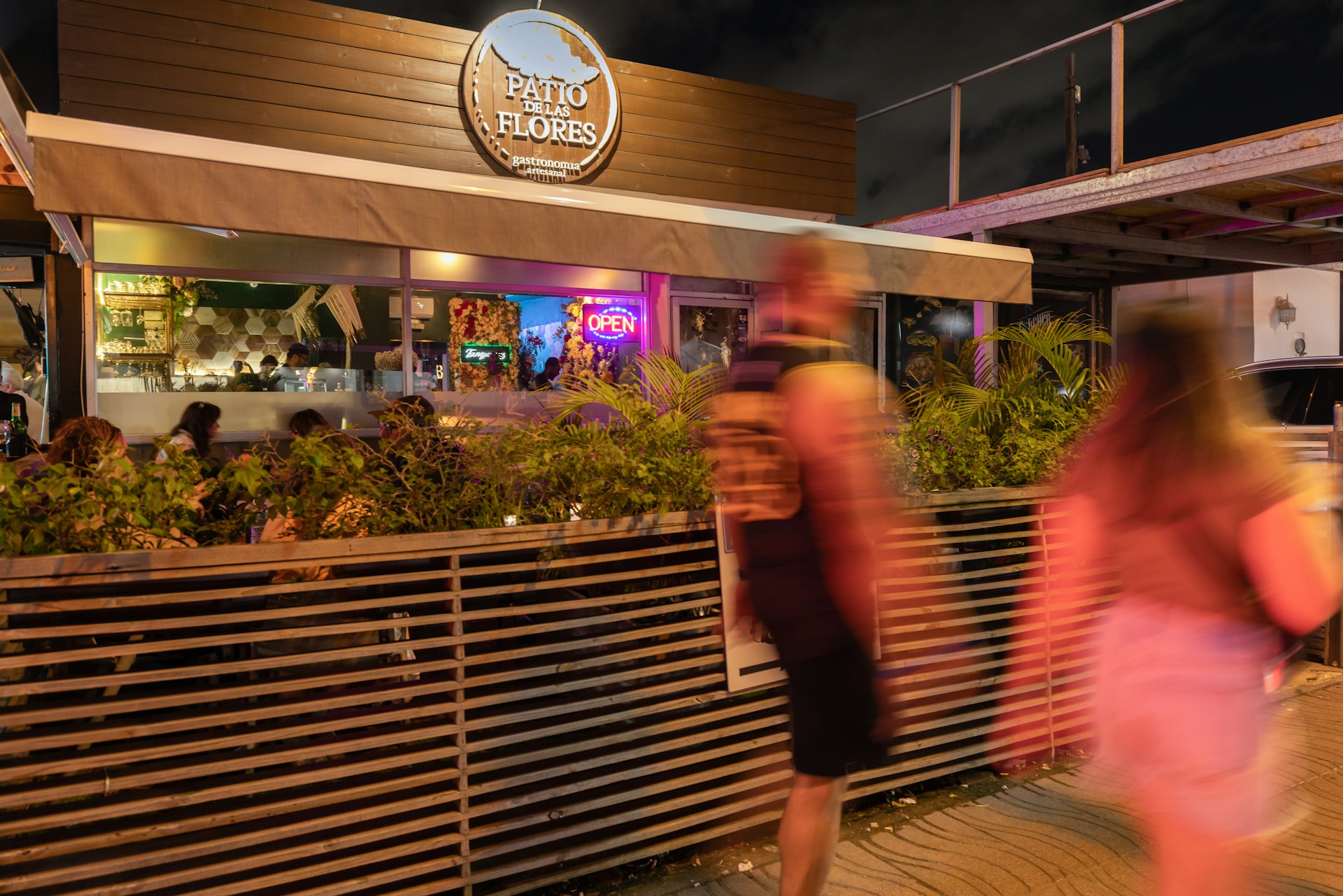
12. Exercise the same caution you would use in a big city back home
Puerto Rico is generally safe for travelers but keep an eye out for risks such as dark, empty streets in Old San Juan and other San Juan neighborhoods . In particular, exercise caution when venturing out to clubs in Santurce – this is a high-crime area at night.
Some beaches in urban areas aren’t safe to hang out at night either. There’s no police presence and these beaches tend to be hidden behind hotels and residences with little to no lighting, providing an excellent opportunity for petty crime.
Research the area where you’re staying and try to speak to someone who already lives there or has visited to gauge safety levels.

13. Don’t skimp on sunblock and bug spray
Caribbean sunlight can hit hard if you’re not used to it. The islands are close to the equator and get hit directly by the sun, with noon to 4pm being the most punishing hours of the day. Don’t skimp on sunblock – aim for SPF50 or higher – and you'll avoid nasty burns.
Any local will tell you that bugs – especially mosquitoes – are a nuisance on summer nights. In the worst cases, they can also carry tropical diseases such as dengue fever, Zika, and chikungunya.
Your best protection against bugs is to wear a lot of DEET-based bug spray, especially in areas close to bodies of sitting water, such as mangroves, lagoons and lakes.
This article was first published May 2022 and updated November 2023
Explore related stories

Apr 23, 2024 • 6 min read
From Paris to Buenos Aires, you’ll want to settle in and raise a glass at these famous literary bars, notebook at the ready.
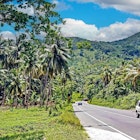
Apr 20, 2024 • 9 min read
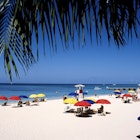
Apr 18, 2024 • 10 min read

Apr 17, 2024 • 8 min read

Apr 15, 2024 • 10 min read

Apr 6, 2024 • 7 min read

Mar 24, 2024 • 5 min read

Mar 20, 2024 • 8 min read

Mar 19, 2024 • 6 min read

Mar 13, 2024 • 6 min read
- Skip to main content
- Skip to "About this site"
Language selection
Search travel.gc.ca.
Help us to improve our website. Take our survey !
COVID-19: travel health notice for all travellers
Puerto Rico travel advice
Latest updates: The Health section was updated - travel health information (Public Health Agency of Canada)
Last updated: April 15, 2024 13:01 ET
On this page
Safety and security, entry and exit requirements, laws and culture, natural disasters and climate, puerto rico - take normal security precautions.
Take normal security precautions in Puerto Rico
Back to top
Petty crime, such as pickpocketing and purse snatching, are prevalent. Violent crime also occurs.
Ensure that your belongings, including your passports and other travel documents, are secure at all times.

Demonstrations
Demonstrations occur from time to time. Even peaceful demonstrations can turn violent at any time. They can also lead to disruptions to traffic and public transportation.
- Avoid areas where demonstrations and large gatherings are taking place
- Follow the instructions of local authorities
- Monitor local media for information on ongoing demonstrations
Mass gatherings (large-scale events)
Women’s safety
Women travelling alone may be subject to some forms of harassment and verbal abuse.
Advice for women travellers
Power and telecommunications outages
Puerto Rico experiences frequent disruptions to power and telecommunications services after Hurricane Maria destroyed much of the power grid in 2017.
Water activities
Coastal waters can be dangerous. Riptides are common.
- Consult residents and tour operators for information on possible hazards and safe swimming areas
- Follow the instructions and warnings of local authorities
If you participate in water sports, such as diving:
- choose a well-established and reputable company that has insurance
- ensure that your travel insurance covers the recreational activities you choose
If in doubt concerning the safety of the facilities or equipment, don’t use them.
Water safety abroad
Adventure tourism
If you engage in adventure tourism:
- never do so alone
- always hire an experienced guide from a reputable company
- buy travel insurance that includes helicopter rescue and medical evacuation
- ensure that your physical condition is good enough to meet the challenges of your activity
- ensure that you’re properly equipped
- ensure that you’re well informed about weather and other conditions that may pose a hazard
- inform a family member or friend of your itinerary obtain detailed information on each activity before setting out
Road safety
Road conditions and road safety vary greatly throughout the island.
Drivers may be aggressive, and few use their signals. There is heavy traffic in larger centres, particularly San Juan.
Roads in mountain areas can be narrow, winding, and poorly paved.
Public transportation
Bus and light rail services.
Bus and light rail (Tren Urbano) services are available in the metropolitan San Juan area.
Ferries travel to and from the islands of Culebra and Vieques, as well as the Dominican Republic.
Taxis are widely available. Fares are metered, except for major tourist destinations in San Juan, where they are fixed. Tourist taxis are white and have a “Taxi Turístico” label on the door.
We do not make assessments on the compliance of foreign domestic airlines with international safety standards.
Information about foreign domestic airlines
Every country or territory decides who can enter or exit through its borders. The Government of Canada can’t intervene on your behalf if you don’t meet your destination’s entry or exit requirements.
Puerto Rico is a territory of the United States. We have obtained the information on this page from the American authorities. It can, however, change at any time.
Confirm entry, exit and visa requirements prior to travelling:
- Entry and exit requirements for the United States
- U.S. Customs and Border Protection
- U.S. Embassy and Consulates
Entry requirements vary depending on the type of passport you use for travel.
Before you travel, check with your transportation company about passport requirements. Its rules on passport validity may be more stringent than the country’s entry rules.
Regular Canadian passport
Your passport must be valid for the duration of your stay.
Passport for official travel
Different entry rules may apply.
Official travel
Passport with “X” gender identifier
While the Government of Canada issues passports with an “X” gender identifier, it cannot guarantee your entry or transit through other countries. You might face entry restrictions in countries that do not recognize the “X” gender identifier. Before you leave, check with the closest foreign representative for your destination.
Other travel documents
Different entry rules may apply when travelling with a temporary passport or an emergency travel document. Before you leave, check with the closest foreign representative for your destination.
Useful links
- Foreign Representatives in Canada
- Canadian passports
Other entry requirements
Customs officials may ask you to show them a return or onward ticket and proof of sufficient funds to cover the cost of your stay.
Children and travel
Learn more about travelling with children .
Yellow fever
Learn about potential entry requirements related to yellow fever (vaccines section).
Relevant Travel Health Notices
- Global Measles Notice - 13 March, 2024
- Zika virus: Advice for travellers - 31 August, 2023
- COVID-19 and International Travel - 13 March, 2024
- Dengue: Advice for travellers - 8 April, 2024
This section contains information on possible health risks and restrictions regularly found or ongoing in the destination. Follow this advice to lower your risk of becoming ill while travelling. Not all risks are listed below.
Consult a health care professional or visit a travel health clinic preferably 6 weeks before you travel to get personalized health advice and recommendations.
Routine vaccines
Be sure that your routine vaccinations , as per your province or territory , are up-to-date before travelling, regardless of your destination.
Some of these vaccinations include measles-mumps-rubella (MMR), diphtheria, tetanus, pertussis, polio, varicella (chickenpox), influenza and others.
Pre-travel vaccines and medications
You may be at risk for preventable diseases while travelling in this destination. Talk to a travel health professional about which medications or vaccines may be right for you, based on your destination and itinerary.
Yellow fever is a disease caused by a flavivirus from the bite of an infected mosquito.
Travellers get vaccinated either because it is required to enter a country or because it is recommended for their protection.
- There is no risk of yellow fever in this country.
Country Entry Requirement*
- Proof of vaccination is not required to enter this country.
Recommendation
- Vaccination is not recommended.
* It is important to note that country entry requirements may not reflect your risk of yellow fever at your destination. It is recommended that you contact the nearest diplomatic or consular office of the destination(s) you will be visiting to verify any additional entry requirements.
About Yellow Fever
Yellow Fever Vaccination Centres in Canada
There is a risk of hepatitis A in this destination. It is a disease of the liver. People can get hepatitis A if they ingest contaminated food or water, eat foods prepared by an infectious person, or if they have close physical contact (such as oral-anal sex) with an infectious person, although casual contact among people does not spread the virus.
Practise safe food and water precautions and wash your hands often. Vaccination is recommended for all travellers to areas where hepatitis A is present.
Measles is a highly contagious viral disease. It can spread quickly from person to person by direct contact and through droplets in the air.
Anyone who is not protected against measles is at risk of being infected with it when travelling internationally.
Regardless of where you are going, talk to a health care professional before travelling to make sure you are fully protected against measles.
Hepatitis B is a risk in every destination. It is a viral liver disease that is easily transmitted from one person to another through exposure to blood and body fluids containing the hepatitis B virus. Travellers who may be exposed to blood or other bodily fluids (e.g., through sexual contact, medical treatment, sharing needles, tattooing, acupuncture or occupational exposure) are at higher risk of getting hepatitis B.
Hepatitis B vaccination is recommended for all travellers. Prevent hepatitis B infection by practicing safe sex, only using new and sterile drug equipment, and only getting tattoos and piercings in settings that follow public health regulations and standards.
Coronavirus disease (COVID-19) is an infectious viral disease. It can spread from person to person by direct contact and through droplets in the air.
It is recommended that all eligible travellers complete a COVID-19 vaccine series along with any additional recommended doses in Canada before travelling. Evidence shows that vaccines are very effective at preventing severe illness, hospitalization and death from COVID-19. While vaccination provides better protection against serious illness, you may still be at risk of infection from the virus that causes COVID-19. Anyone who has not completed a vaccine series is at increased risk of being infected with the virus that causes COVID-19 and is at greater risk for severe disease when travelling internationally.
Before travelling, verify your destination’s COVID-19 vaccination entry/exit requirements. Regardless of where you are going, talk to a health care professional before travelling to make sure you are adequately protected against COVID-19.
The best way to protect yourself from seasonal influenza (flu) is to get vaccinated every year. Get the flu shot at least 2 weeks before travelling.
The flu occurs worldwide.
- In the Northern Hemisphere, the flu season usually runs from November to April.
- In the Southern Hemisphere, the flu season usually runs between April and October.
- In the tropics, there is flu activity year round.
The flu vaccine available in one hemisphere may only offer partial protection against the flu in the other hemisphere.
The flu virus spreads from person to person when they cough or sneeze or by touching objects and surfaces that have been contaminated with the virus. Clean your hands often and wear a mask if you have a fever or respiratory symptoms.
In this destination, rabies may be present in some wildlife species, including bats. Rabies is a deadly disease that spreads to humans primarily through bites or scratches from an infected animal.
If you are bitten or scratched by an animal while travelling, immediately wash the wound with soap and clean water and see a health care professional.
Before travel, discuss rabies vaccination with a health care professional. It may be recommended for travellers who will be working directly with wildlife.
Safe food and water precautions
Many illnesses can be caused by eating food or drinking beverages contaminated by bacteria, parasites, toxins, or viruses, or by swimming or bathing in contaminated water.
- Learn more about food and water precautions to take to avoid getting sick by visiting our eat and drink safely abroad page. Remember: Boil it, cook it, peel it, or leave it!
- Avoid getting water into your eyes, mouth or nose when swimming or participating in activities in freshwater (streams, canals, lakes), particularly after flooding or heavy rain. Water may look clean but could still be polluted or contaminated.
- Avoid inhaling or swallowing water while bathing, showering, or swimming in pools or hot tubs.
Typhoid is a bacterial infection spread by contaminated food or water. Risk is higher among children, travellers going to rural areas, travellers visiting friends and relatives or those travelling for a long period of time.
Travellers visiting regions with a risk of typhoid, especially those exposed to places with poor sanitation, should speak to a health care professional about vaccination.
Insect bite prevention
Many diseases are spread by the bites of infected insects such as mosquitoes, ticks, fleas or flies. When travelling to areas where infected insects may be present:
- Use insect repellent (bug spray) on exposed skin
- Cover up with light-coloured, loose clothes made of tightly woven materials such as nylon or polyester
- Minimize exposure to insects
- Use mosquito netting when sleeping outdoors or in buildings that are not fully enclosed
To learn more about how you can reduce your risk of infection and disease caused by bites, both at home and abroad, visit our insect bite prevention page.
Find out what types of insects are present where you’re travelling, when they’re most active, and the symptoms of the diseases they spread.
There is a risk of chikungunya in this country. The risk may vary between regions of a country. Chikungunya is a virus spread through the bite of an infected mosquito. Chikungunya can cause a viral disease that typically causes fever and pain in the joints. In some cases, the joint pain can be severe and last for months or years.
Protect yourself from mosquito bites at all times. There is no vaccine available for chikungunya.
- In this country, dengue is a risk to travellers. It is a viral disease spread to humans by mosquito bites.
- Dengue can cause flu-like symptoms. In some cases, it can lead to severe dengue, which can be fatal.
- The level of risk of dengue changes seasonally, and varies from year to year. The level of risk also varies between regions in a country and can depend on the elevation in the region.
- Mosquitoes carrying dengue typically bite during the daytime, particularly around sunrise and sunset.
- Protect yourself from mosquito bites . There is no vaccine or medication that protects against dengue.
Zika virus is a risk in this country.
Zika virus is primarily spread through the bite of an infected mosquito. It can also be sexually transmitted. Zika virus can cause serious birth defects.
During your trip:
- Prevent mosquito bites at all times.
- Use condoms correctly or avoid sexual contact, particularly if you are pregnant.
If you are pregnant or planning a pregnancy, you should discuss the potential risks of travelling to this destination with your health care provider. You may choose to avoid or postpone travel.
For more information, see Zika virus: Pregnant or planning a pregnancy.
Animal precautions
Some infections, such as rabies and influenza, can be shared between humans and animals. Certain types of activities may increase your chance of contact with animals, such as travelling in rural or forested areas, camping, hiking, and visiting wet markets (places where live animals are slaughtered and sold) or caves.
Travellers are cautioned to avoid contact with animals, including dogs, livestock (pigs, cows), monkeys, snakes, rodents, birds, and bats, and to avoid eating undercooked wild game.
Closely supervise children, as they are more likely to come in contact with animals.
Person-to-person infections
Stay home if you’re sick and practise proper cough and sneeze etiquette , which includes coughing or sneezing into a tissue or the bend of your arm, not your hand. Reduce your risk of colds, the flu and other illnesses by:
- washing your hands often
- avoiding or limiting the amount of time spent in closed spaces, crowded places, or at large-scale events (concerts, sporting events, rallies)
- avoiding close physical contact with people who may be showing symptoms of illness
Sexually transmitted infections (STIs) , HIV , and mpox are spread through blood and bodily fluids; use condoms, practise safe sex, and limit your number of sexual partners. Check with your local public health authority pre-travel to determine your eligibility for mpox vaccine.
Medical services and facilities
Good health care is available but conditions may vary throughout the island.
Ensure you have sufficient medication for your stay and extra in case of emergency. It can be difficult to get prescriptions refilled.
Medical evacuation can be very expensive and you may need it in case of serious illness or injury.
Make sure you get travel insurance that includes coverage for medical evacuation and hospital stays.
Travel health and safety
Keep in Mind...
The decision to travel is the sole responsibility of the traveller. The traveller is also responsible for his or her own personal safety.
Be prepared. Do not expect medical services to be the same as in Canada. Pack a travel health kit , especially if you will be travelling away from major city centres.
You must abide by local laws.
Learn about what you should do and how we can help if you are arrested or detained abroad .
Penalties for possession, use or trafficking of illegal drugs are severe. Convicted offenders can expect jail sentences and heavy fines.
Drugs, alcohol and travel
Dual citizenship
Dual citizenship is legally recognized in the United States.
If you are a Canadian citizen, but also a citizen of the United States, our ability to offer you consular services may be limited while you're there. You may also be subject to different entry/exit requirements .
- General information for travellers with dual citizenship
- Dual Nationality - U.S. Department of State, Bureau of Consular Affairs
International Child Abduction
The Hague Convention on the Civil Aspects of International Child Abduction is an international treaty. It can help parents with the return of children who have been removed to or retained in certain countries in violation of custody rights. The convention applies between Canada and the United States.
If your child was wrongfully taken to, or is being held in Puerto Rico, and if the applicable conditions are met, you may apply for the return of your child to the Puerto Rican court.
If you are in this situation:
- act as quickly as you can
- contact the Central Authority for your province or territory of residence for information on starting an application under The Hague Convention
- consult a lawyer in Canada and in Puerto Rico to explore all the legal options for the return of your child
- report the situation to the nearest Canadian government office abroad or to the Vulnerable Children’s Consular Unit at Global Affairs Canada by calling the Emergency Watch and Response Centre
If your child was removed from a country other than Canada, consult a lawyer to determine if The Hague Convention applies.
Be aware that Canadian consular officials cannot interfere in private legal matters or in another country’s judicial affairs.
- List of Canadian Central Authorities for the Hague Convention
- International Child Abduction: A Guidebook for Left-Behind Parents
- Travelling with children
- The Hague Convention - Hague Conference on Private International Law
- Canadian embassies and consulates by destination
- Emergency Watch and Response Centre
You can drive in Puerto Rico with a valid Canadian driver’s licence for up to 90 days. If you plan to stay longer, you must obtain a Puerto Rican licence.
The currency of Puerto Rico is the U.S. dollar (USD). Credit cards are widely accepted.
Hurricane season
Hurricanes usually occur from mid-May to the end of November. During this period, even small tropical storms can quickly develop into major hurricanes.
These severe storms can put you at risk and hamper the provision of essential services.
If you decide to travel to a coastal area during the hurricane season:
- know that you expose yourself to serious safety risks
- be prepared to change your travel plans on short notice, including cutting short or cancelling your trip
- stay informed of the latest regional weather forecasts
- carry emergency contact information for your airline or tour operator
- follow the advice and instructions of local authorities
- Tornadoes, cyclones, hurricanes, typhoons and monsoons
- Large-scale emergencies abroad
- Active storm tracking and hurricane watches and warnings - United States’ National Hurricane Center
Puerto Rico Emergency Management Bureau - United States Homeland Security
Local services
Dial 911 for emergency assistance.
Consular assistance
Florida, Puerto Rico, US Virgin Islands
For emergency consular assistance, call the Consulate General of Canada to the United States, in Miami, and follow the instructions. At any time, you may also contact the Emergency Watch and Response Centre in Ottawa.
The decision to travel is your choice and you are responsible for your personal safety abroad. We take the safety and security of Canadians abroad very seriously and provide credible and timely information in our Travel Advice to enable you to make well-informed decisions regarding your travel abroad.
The content on this page is provided for information only. While we make every effort to give you correct information, it is provided on an "as is" basis without warranty of any kind, expressed or implied. The Government of Canada does not assume responsibility and will not be liable for any damages in connection to the information provided.
If you need consular assistance while abroad, we will make every effort to help you. However, there may be constraints that will limit the ability of the Government of Canada to provide services.
Learn more about consular services .
Risk Levels
take normal security precautions.
Take similar precautions to those you would take in Canada.
Exercise a high degree of caution
There are certain safety and security concerns or the situation could change quickly. Be very cautious at all times, monitor local media and follow the instructions of local authorities.
IMPORTANT: The two levels below are official Government of Canada Travel Advisories and are issued when the safety and security of Canadians travelling or living in the country or region may be at risk.
Avoid non-essential travel
Your safety and security could be at risk. You should think about your need to travel to this country, territory or region based on family or business requirements, knowledge of or familiarity with the region, and other factors. If you are already there, think about whether you really need to be there. If you do not need to be there, you should think about leaving.
Avoid all travel
You should not travel to this country, territory or region. Your personal safety and security are at great risk. If you are already there, you should think about leaving if it is safe to do so.
Update April 12, 2024
Information for u.s. citizens in the middle east.
- Travel Advisories |
- Contact Us |
- MyTravelGov |
Find U.S. Embassies & Consulates
Travel.state.gov, congressional liaison, special issuance agency, u.s. passports, international travel, intercountry adoption, international parental child abduction, records and authentications, popular links, travel advisories, mytravelgov, stay connected, legal resources, legal information, info for u.s. law enforcement, replace or certify documents.
Share this page:
Learn about your destination
Take 90 seconds for safer travel.
Travel Advisory Levels
Enroll in step.

Subscribe to get up-to-date safety and security information and help us reach you in an emergency abroad.
Recommended Web Browsers: Microsoft Edge or Google Chrome.
External Link
You are about to leave travel.state.gov for an external website that is not maintained by the U.S. Department of State.
Links to external websites are provided as a convenience and should not be construed as an endorsement by the U.S. Department of State of the views or products contained therein. If you wish to remain on travel.state.gov, click the "cancel" message.
You are about to visit:
Puerto Rico Safety 2024: Is Puerto Rico Safe to Visit?
Puerto Rico might be the smallest island in the Greater Antilles, but trust us, it’s a gem waiting to be explored.
We are talking 300 beaches along 272 miles of coastline, a UNESCO World Heritage Site , world-class rum distilleries, enchanting bioluminescent bays, numerous lighthouses, forests, nature reserves, wildlife refuges, and internationally recognized festivals.
Puerto Rico is also part of the United States , so no passport is needed for American travelers. How awesome is that?
And the safety of Puerto Rico is as fantastic as the scenery . Millions visit yearly , and most have a worry-free experience. But, you know, nowhere is 100% risk-free.
That’s why we’re here to share some of the island’s social and safety tips. Master those, and your Puerto Rican adventure will be nothing short of amazing.
Is Puerto Rico Safe?
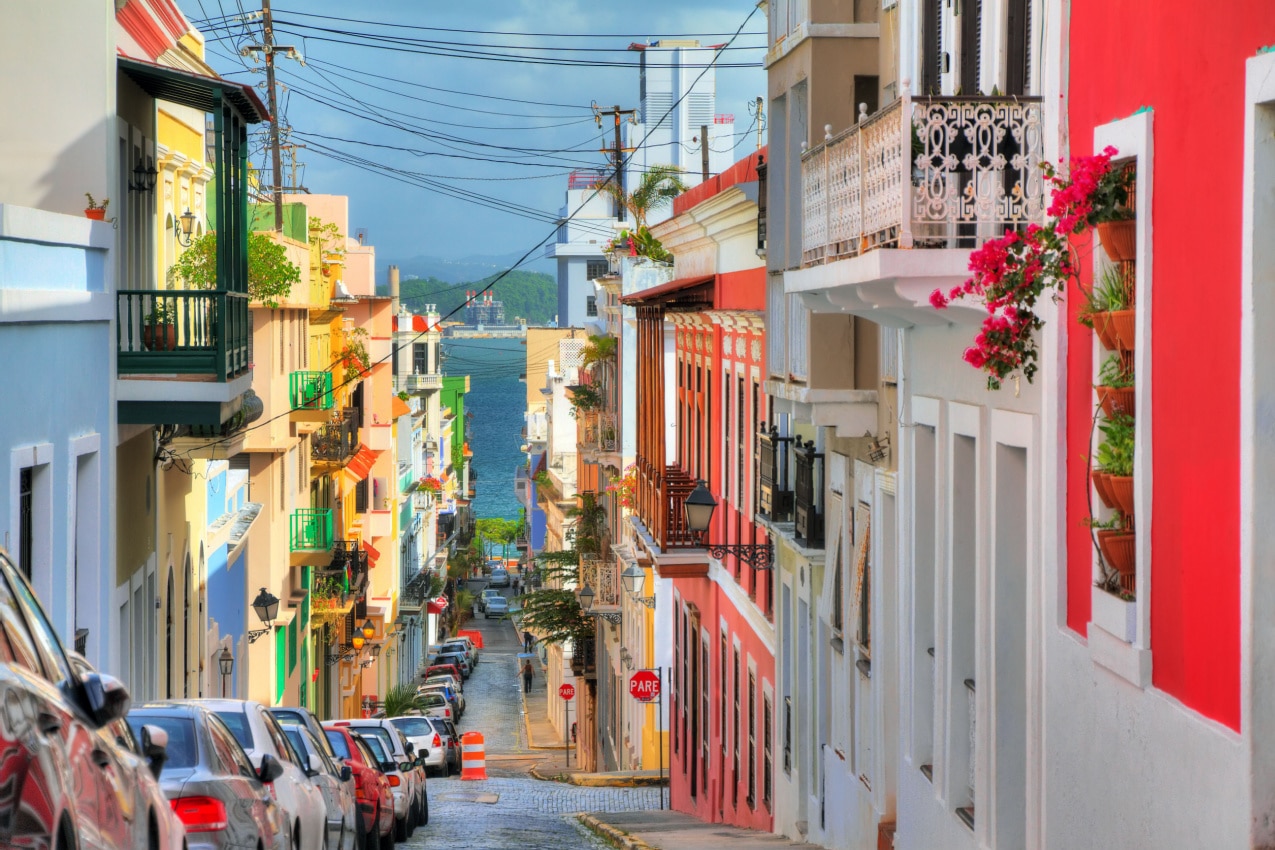
Puerto Rico is known for being very safe . The serious crimes are tied to local gang disputes, rarely impacting tourists.
Your primary concern in Puerto Rico should lean more toward the weather . Earthquakes and hurricanes are not uncommon, so it’s good to stay informed!
We’ll delve into each aspect separately, but for now, here’s an early heads-up on the safety scene in Puerto Rico:
- International travel advisories: Level One, practice normal precautions
- Crime rating: Moderate, 61.72
- Most common crime: Vandalism
- Public transportation safety: Buses and trains are well-maintained and safe, but may be less frequent during nighttime
- Safety walking alone during the day: Moderate
- Safety walking alone during the night: Low
- Road safety: Drive with caution on State Road PR-2, mountain areas of Utuado and Jayuya, Highway 143 in Barranquitas, Ruta Panorámica Luis Muñoz Marin, and interior roads in Toa Alta
- Beach safety: The Atlantic coast in the north has larger waves, while the Caribbean coast to the south has smaller waves
- Common natural disasters: Earthquakes, landslides, and hurricanes
- Carbon monoxide poisoning: Possible, bring a portable CO detector
- Police presence: A team of 11,532 members organized into 13 regions across the island
- Medical care quality: High-quality medical facilities and skilled healthcare professionals
Travel Advisory for Puerto Rico
Puerto Rico sits comfortably under a ‘Level One’ travel advisory, signaling a call for normal precautions – Canada , the United Kingdom , New Zealand , and Australia all give the green light.
For crime concerns, international travel advisories want you to be vigilant against pickpocketing and purse snatching . Keep a close eye on your belongings, including passports and travel documents.
While Puerto Rico isn’t a target for terrorist attacks, demonstrations are noted in the advisories. From time to time, these protests may turn violent, so stay clear of areas with ongoing demonstrations for your safety.
Power outages are not uncommon in Puerto Rico. After Hurricane Maria wreaked havoc in 2017, Puerto Rico has had its fair share of disruptions to power and telecommunications services.
If you’re thinking of renting a car, be aware that road conditions vary across the island—be on the lookout for aggressive driving, sparse use of signals, and heavy traffic in bigger areas like San Juan. Some mountain roads may also be narrow, winding, and containing potholes.
A Comprehensive Look at Puerto Rico Crime Statistics
Puerto Rico maintains a moderate crime rating of 61.72. In 2023, the Police of Puerto Rico recorded a total of 69,571 crimes, a slight decrease from the 70,022 cases in 2022.
The most commonly reported crime in Puerto Rico is vandalism (9,572). Noteworthy improvements include a decrease in homicides to 439, less by 116 from 2022 and 171 from 2021.
Breaking it down by police districts, Bayamon (35,249) and San Juan (31, 302) saw the highest number of criminal cases in 2023.
Police Presence in Puerto Rico
The Puerto Rico Police Force is a team of 11,532 officers , strategically organized into 13 regions across the island. The police officers in tourist hotspots are well-versed in dealing with visitors – they’re friendly, bilingual, and knowledgeable of local attractions. In high-crime areas, you’ll find more visible police presence, contributing to a secure environment for both residents and tourists.
Remember, in Puerto Rico, the police have the right to request your identification. Approach them with kindness and respect, and you’re likely to have a positive experience. And of course, being a law-abiding tourist is the key to steering clear of any run-ins with the authorities.
Public Transportation Safety in Puerto Rico
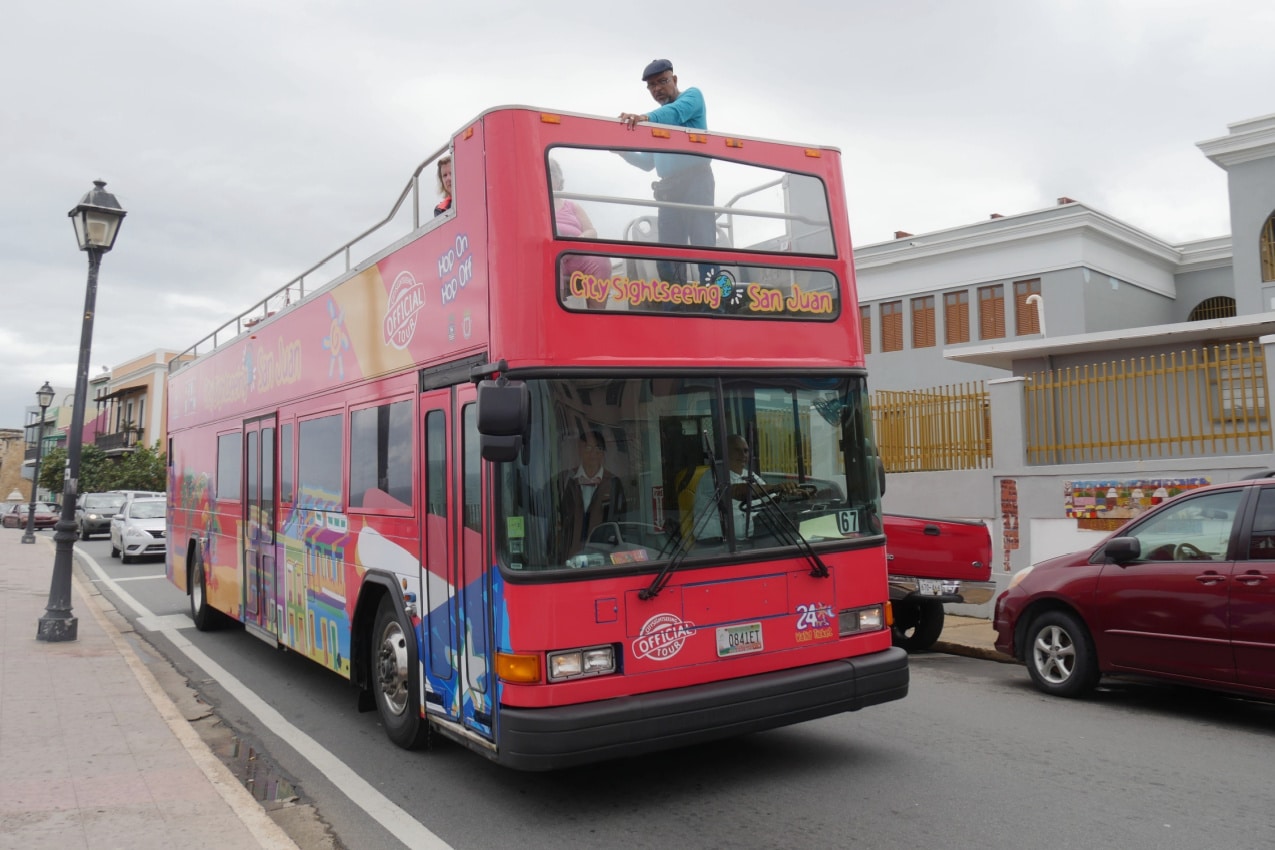
Public transportation in Puerto Rico is generally reliable and safe. There’s an extensive network of 30 bus routes—serving Toa Baja, Cataño, Bayamón, Guaynabo, San Juan, and Carolina, and an Urban Train connecting three municipalities—San Juan, Guaynabo, and Bayamón.
Buses and trains are well-maintained, but it’s important to note that service might be less frequent during nighttime or experience delays during peak hours.
For nighttime excursions, opt for a taxi . Licensed taxis have visible identification, like a rooftop taxi sign or an official taxi sticker. If available, you can also rely on ride-sharing services like Uber . Taxis generally have fixed rates for different zones, with rate sheets displayed inside. If unsure about the fare, clarify with the driver before starting your journey. If the taxi lacks a meter, negotiate and settle on a fare upfront. Always keep communication open, either with a door ajar or through the window, ensuring you can walk away if needed.
Road Safety in Puerto Rico
Driving in Puerto Rico is generally safe, but some locals can be a bit daring on the roads – changing lanes without signaling, speeding, and even running red lights.
Take extra caution on the following roads:
- State Road PR-2: Be cautious of speeding drivers.
- Mountain Areas of Utuado and Jayuya: Damaged drainage can lead to water flow on roads after heavy rains.
- Highway 143 in Barranquitas: Collapsed from hurricane winds and flooding, this road hasn’t been rebuilt.
- Ruta Panorámica Luis Muñoz Marin: Open but has potential hazards like potholes.
- Interior roads in Toa Alta: Large sections of missing tarmac and some entirely collapsed sections.
When parking, choose safe, designated areas, and never leave valuables in your car. Car theft is unfortunately a common issue, so taking precautions is crucial.
Medical Care Quality in Puerto Rico
Puerto Rico’s healthcare system stands out with high-quality medical facilities and skilled healthcare professionals, offering a standard almost comparable to what you’d find in the U.S.
Some of the best hospitals in Puerto Rico include:
- Spanish Hospital Auxilio Mutuo
- VA Caribbean Healthcare System
- Hospital Pavia Santurce
- Ashford Presbyterian Community Hospital
- Hima San Pablo Bayamon
- San Luke’s Memorial Hospital Inc
- Manati Medical Center
- Centro Cardiovascular
- Hospital Damas Inc
- Mayaguez Medical Center
If you opt for public healthcare, be prepared for longer wait lines, even with a scheduled appointment. Private healthcare, on the other hand, offers shorter waiting times but is pricier. If you’re just visiting, your U.S. health insurance should cover your medical costs, but it’s wise to double-check your coverage before booking your trip. Good travel insurance options include TravelSafe , Travelex , Seven Corners , HTH Worldwide , and World Nomads .
Is It Safe to Travel Solo in Puerto Rico?
Puerto Rico can be a safe destination for solo travelers. Urban areas like Old San Juan or Condado, with their high tourist activity, tend to be safer—so sticking to these tourist hotspots is a smart move. On the flip side, quieter and less frequent areas might have increased safety risks after dark, making it wise to avoid such isolated places.
Always trust your instincts and choose reliable transportation. Additionally, don’t overlook the basics—remember sunscreen during the day, moderate alcohol intake at outings, and inform someone when you’re heading out for a hike.
Perils of Nature: The Risk of Natural Disasters in Puerto Rico
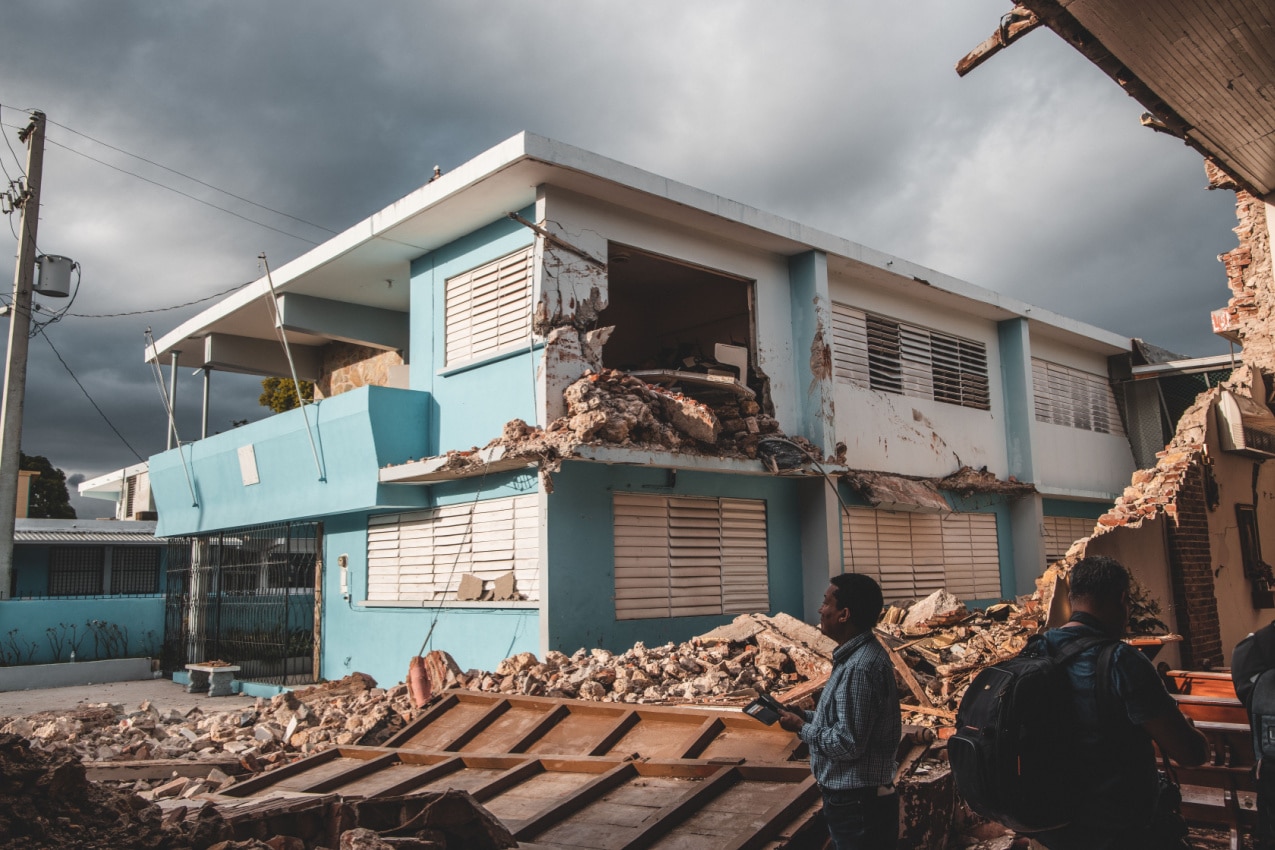
Given its spot in the northeastern Caribbean, Puerto Rico is no stranger to nature’s challenges, from earthquakes and landslides to the big players: hurricanes.
Earthquakes
Puerto Rico is situated near the boundary between the North American and Caribbean tectonic plates, making it susceptible to frequent seismic activity.
For instance, in the winter between 2019 and 2020 , the island experienced over 500 earthquakes with a magnitude of 2 or greater on the Richter scale. The most significant one occurred in early January 2020—a 6.4 magnitude quake centered off the southern coast.
In the first ten days of 2024 , Puerto Rico had 65 quakes with magnitudes up to 3.6 :
- 14 quakes above magnitude 3
- 44 quakes between magnitude 2 and 3
- 7 quakes below magnitude 2, typically not felt by people
A destructive earthquake is rare during a short visit to Puerto Rico, but can still happen. In the event of an earthquake, you may only have seconds to protect yourself, so swift action is crucial.
If you are indoors:
- DROP to the ground
- Take COVER by getting under a sturdy desk or table
- HOLD ON until the shaking stops
If you are outdoors when the shaking begins:
- Find a clear spot AWAY from buildings, trees, streetlights, and power lines
- Drop, Cover, and Hold On
The mountainous terrain of Puerto Rico can be vulnerable to landslides, especially during periods of heavy rain or after seismic events.
For instance, the intense rainfall from Hurricane Maria in 2017 triggered over 40,000 landslides in Puerto Rico. The devastating 6.4 earthquake in January 2020 mentioned earlier resulted in more than 300 landslides across the region.
Landslides can occur unexpectedly, so here’s what you can do:
- Research the area you plan to visit in Puerto Rico, including its geological features and past landslide incidents
- Book a hotel located in a safe area, away from steep slopes
- Monitor the weather for any heavy rainfall or severe weather warnings
- When hiking, stick to marked trails
Puerto Rico is situated in the Atlantic basin and much like its neighboring countries – Mexico , the Dominican Republic , and the Bahamas – it’s highly susceptible to hurricanes.
The hurricane season typically spans from June 1 to November 30, with an average of about 5 hurricanes affecting Puerto Rico each year. Most hurricanes not only come close to the island but also make landfall, especially impacting the east and west regions.
The most significant hurricane to strike Puerto Rico in 2023 was Hurricane Franklin on August 25th. According to the Saffir-Simpson scale , it was classified as a tropical storm hurricane. Out at sea, it reached speeds of up to 149 mph (241 k/h), hitting category-4 status.
Hurricanes don’t strike immediately like landslides or earthquakes. Some hurricanes may make landfall within a few days of formation, while others may change direction before reaching land. This provides ample time for evacuation and appropriate action.
If there’s a hurricane alert, keep away from the beach, and definitely avoid water sports like surfing. The water gets crazy with strong currents and big waves, so safety comes first.
Puerto Rico has shelters, mainly in public schools, ready for hurricanes. In San Juan, the Roberto Clemente Coliseum is the biggest open shelter. It’s smart to know where these shelters are and have an evacuation plan ready.
Beware the Silent Threat: Carbon Monoxide Poisoning in Puerto Rico
When Hurricane Lee showed up in September 2023, the U.S. Consumer Product Safety Commission (CPSC) warned people in Puerto Rico about the dangers of carbon monoxide poisoning.
They pointed out that carbon monoxide can leak from generators, indoor charcoal use, candles, and faulty appliances and recommend having a CO detector —a device that blares an alarm if it senses dangerous CO levels in a room.
Whether a storm’s brewing or not, CO can sneak into your hotel room from a faulty hotel appliance. So before you book your room, ask the hotel staff if they’ve got CO detectors in the rooms. If you’re feeling extra cautious, toss a portable CO detector in your travel bag.
Carbon monoxide is invisible to our senses. However, it gives a heads-up with symptoms like nausea, headaches, and dizziness. Don’t ignore these warning signs. Act promptly because prolonged exposure can leave you unconscious, and in the worst-case scenario, be lethal.
Serenity by the Shore: The Safety of Puerto Rico Beaches
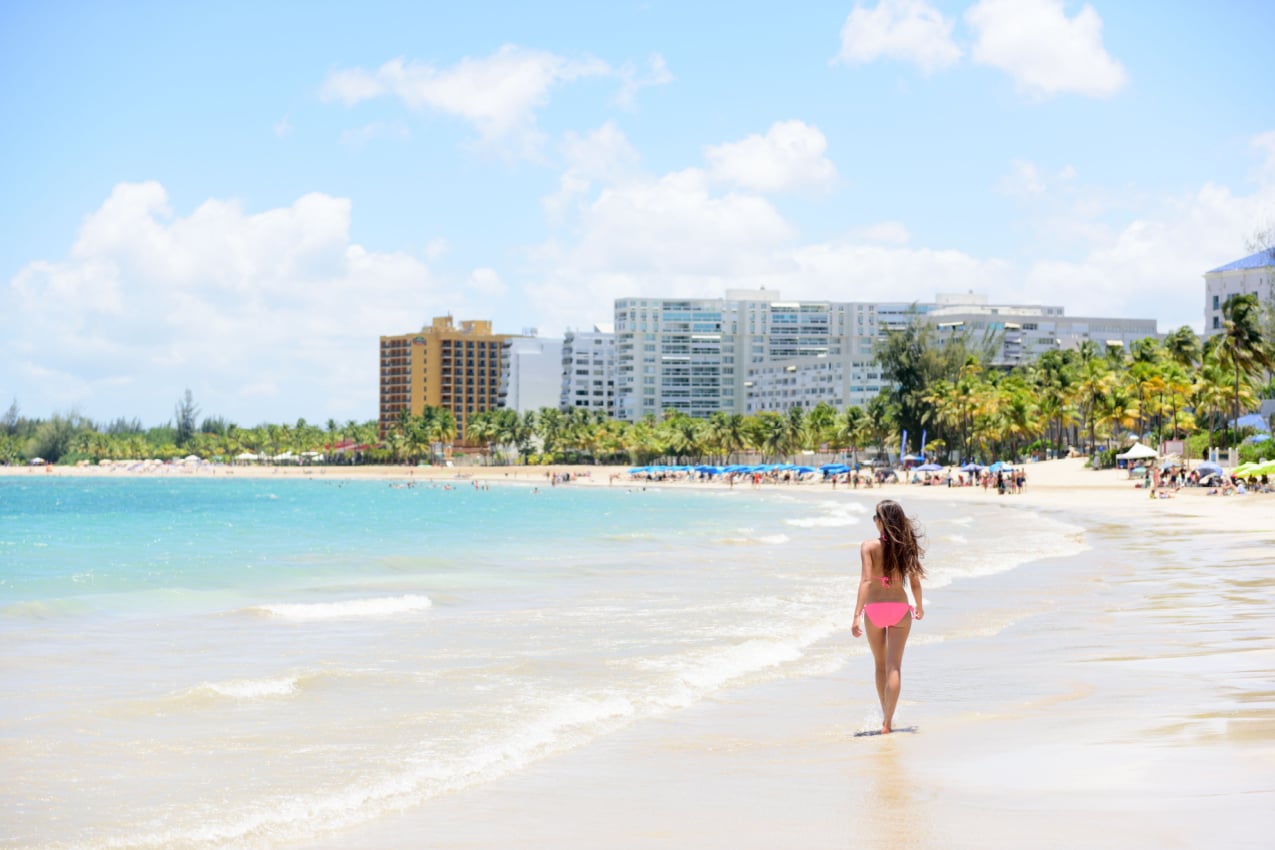
Puerto Rico’s beaches are not just beautiful — they’re plenty . If you like to sunbathe on the Atlantic coast in the north, expect some bugger, more lively waves. On the other hand, the Caribbean coast in the south has milder, more easygoing waves.
Puerto Rico’s more popular beaches are stacked with lifeguards, but not all of them, so it’s up to you to make a judgment of the water conditions.
First things first: check the color of the flag planted on the beach:
- Red Flag: Serious danger—high surf, life-threatening currents, or both.
- Yellow Flag: Rough swimming conditions, exercise caution. Potential high surf or risky currents.
- Green Flag: It’s safe to swim.
- Purple Flag: Spotted dangerous ocean animals (sharks, jellyfish, sea urchins).
- Blue Flag: Eco-label for water quality, environmental care, and safety.
All in all, if you see a deserted beach in Puerto Rico, there’s probably a reason for it. It could be due to the presence of dangerous oceanic animals or strong undercurrents. If caught in a current, follow NOAA’s advice : conserve energy, and swim parallel to the shore until you’re free from the current.
Lastly, beach enjoyment comes with responsibility. Keep an eye on your belongings, avoid flashy items, and be cautious on high-traffic tourist beaches like Ocean Park and Isla Verde, where pickpockets may lurk.
Puerto Rico Weather Patterns: What to Expect
The climate in Puerto Rico is tropical marine —sunny, hot, and humid all year round. Coastal plains hover between 76°F and 88°F, while mountains keep it cool at 73°F to 78°F.
The island receives an average of 62 inches of rainfall annually, with the north coast getting more rain than the south. May to October brings the heaviest rains, overlapping with hurricane season from June to November.
Weather in San Juan
The temperature in San Juan remains consistently warm throughout the year —creating a perpetual summer atmosphere. The temperature spans from 72°F to 89°F (22.2 to 31.6°C), rarely falling below 69°F (20.5°C) or exceeding 91°F (32.7°C).
The sunny and dry season is from mid-November to April—the same time the island is buzzing with tourists. January stands out as the clearest month, boasting an 81% chance of clear skies and minimal rainfall of 1.3 inches (33mm).
Transitioning to the cloudy season , the sky is overcast from April to mid-November. June takes the lead as the cloudiest month, with cloud cover 68% of the time. May to October is the rainy period, with the possibility of a hurricane from June to November. September has the most rainfall, 4.7 inches (119mm), but it typically occurs as quick afternoon showers—refreshing rather than disrupting daily activities.
The windier season spans a brief three months from June to August, featuring average wind speeds surpassing 10.9 mph (17.5 k/h). July marks the peak of windiness, with an average hourly speed of 12.4 mph (19.9 k/h). On the flip side, October emerges as the calmest month, with an average hourly wind speed of 9.4 mph (15.1k/h).
For sunbathing and water activities , warmer water prevails from August to early November, with an average temperature exceeding 83°F (28.3°C). September, with an average water temperature of 84°F (28.8°C), stands out as the warmest month. Even in February, the coolest month for water temperature, it remains pleasant at 79°F (26.1°C), offering a comfortable opportunity for a refreshing dip.
Monthly Average Temperatures in Puerto Rico
When is the best time to visit puerto rico.
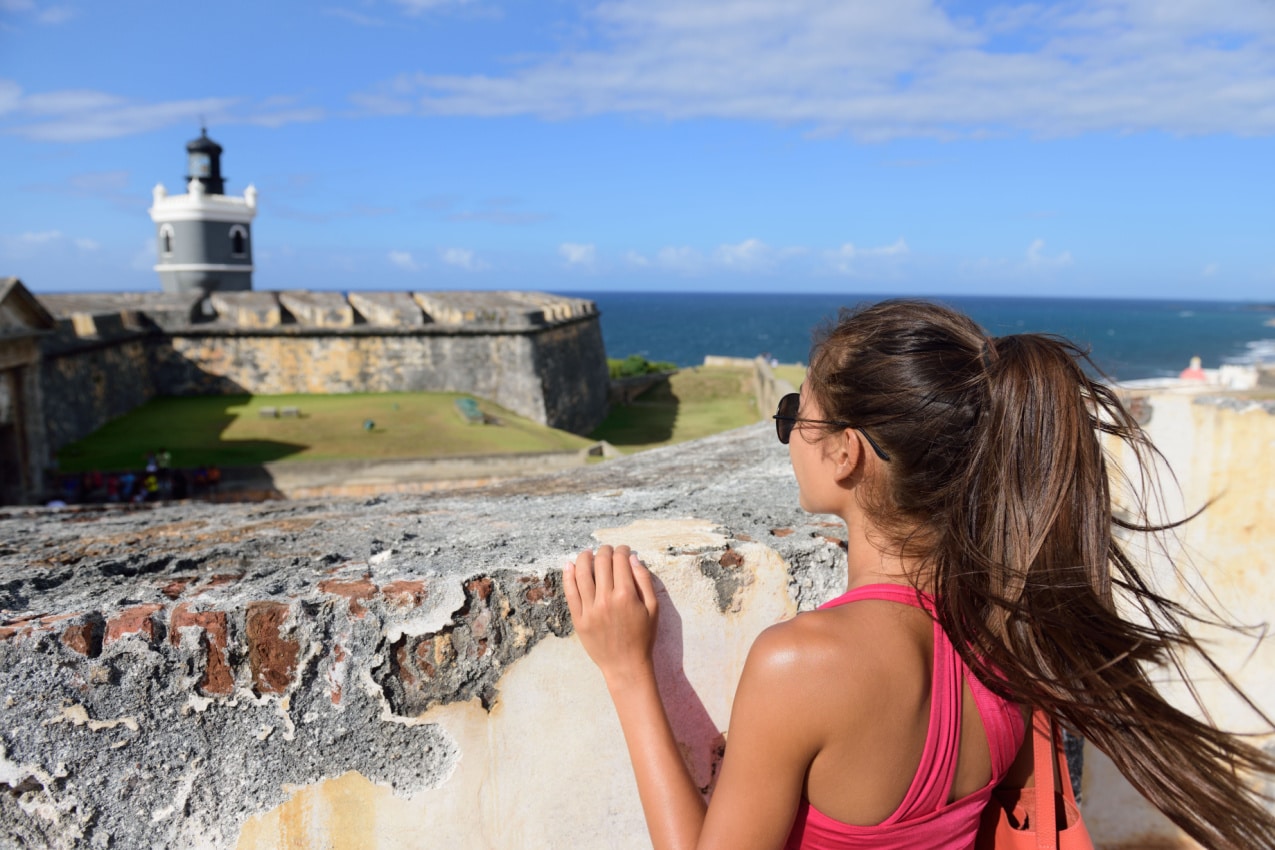
The best time to visit Puerto Rico is from December to April when the island enjoys nothing but sunny skies, minimal rain, and no storms.
December offers fantastic waves for surfing, while January boasts the clearest skies and rain-free days. The winter in Puerto Rico is nothing like the winter in other colder regions in the world, which is why many people opt for this destination to dodge the freezing temperatures back home.
If you opt for a quieter experience but still favorable weather, consider mid-April to May, Puerto Rico’s shoulder season. This period offers a more tranquil atmosphere compared to the bustling peak tourist season from winter to mid-spring.
Summer and fall may bring afternoon showers and the potential for hurricanes, but they also bring rock-bottom prices on flights, hotels, and activities. Yes, there may be occasional afternoon showers, but there are plenty of sunny days in Puerto Rico during these months—so sunbathing and other outdoor adventures are still given. Just be prepared with an umbrella and water-resistant shoes in case of unexpected rainstorms.
How to Stay Safe in Puerto Rico
So, Puerto Rico’s got some caveats that you should prepare for:
- Thirsty? Stick to bottled water. The tap water might be safe and up to standards, but it may give you diarrhea if you have a sensitive stomach.
- Watch out for sandflies and mosquitoes . Put on some insect repellent, and you’re good to go.
- Keep your guard up at night. Muggings can happen, especially in isolated areas. Avoid walking at night around San Juan’s Old City, especially off Norzagaray Boulevard.
- If you’re hitting the road, do it during daylight hours. Reckless driving is more common at nighttime, plus, wrong turns at midnight can lead to dangerous neighborhoods.
- Don’t leave valuables unattended on the beach. And if you’re off to a remote beach, stay sharp—the only company might be a not-so-friendly person eyeing your belongings.
- Learn some basic Spanish. Puerto Rico’s got a bilingual vibe – Spanish and English. However, the majority of locals speak Spanish. Blend in and learn some phrases on apps like Babbel and Duolingo.
- Plan your day. Citywiz is your go-to app for Puerto Rico’s best spots, recommending everything from the best restaurants to fun tours, and the latest cultural events.
- Learn how to navigate through the island. Get a map app like Citymapper . It lays out the cities and recommends transport options along with flights.
Emergency Numbers
- Emergency Services: 911
- Police: 787-343-2020
- Ambulance: 787-343-2222
- Fire Department: 787-343-2330
Wrapping It Up!
Puerto Rico is generally safe for tourists, but hey—stay aware and cautious.
Pickpockets and robbers are after the small treasures: cash, flashy jewelry, phones, and cameras. So keep a watchful eye, especially on public transport, bus stations, public beaches, restaurants, and venues.
Hurricanes might swing by, but with good planning and hitting the sweet spot weather-wise, you’ll soak up nothing but sunshine. Oh, and when you’re capturing those picture-perfect moments, keep your surroundings in mind—respect people’s privacy so you can avoid any unintentional conflict.
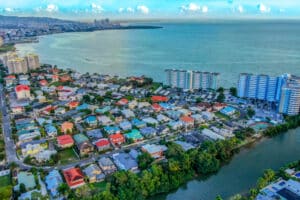
Trinidad and Tobago Safety 2024: Trinidad and Tobago Safe to Visit
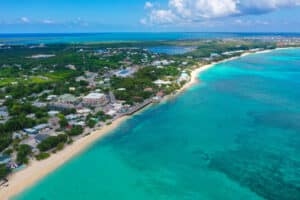
Cayman Safety 2024: Is Cayman Safe to Visit?
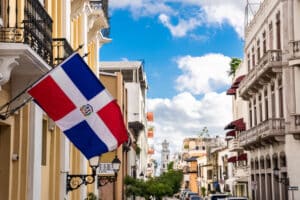
Dominican Republic Safety 2024: Is Dominican Republic Safe to Visit?
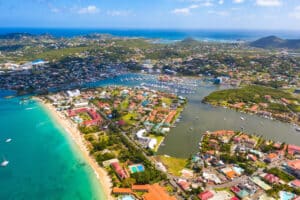
St. Lucia Safety 2024: Is St. Lucia Safe to Visit?
Your email address will not be published. Required fields are marked *
Save my name, email, and website in this browser for the next time I comment.
San Juan Puerto Rico Travel Guide
Our San Juan Puerto Rico travel guide will prepare you with all the information you need to plan your next vacation.

What’s covered in the San Juan Puerto Rico travel guide:
Where is Puerto Rico located?
- Puerto Rico travel bans and travel restrictions
- Best time to go to San Juan Puerto Rico
- How to get to Puerto Rico
- Top things to do in San Juan Puerto Rico
- Top Hotels in San Juan Puerto Rico
- Best San Juan Beaches
- Best San Juan Bars
Puerto Rico is an island in the Caribbean. It is located southeast from Florida, directly east of the Dominican Republic and Haiti. The average flight from Miami to San Juan is 2.5 hours.
Does Puerto Rico have a travel ban or travel restrictions right now?
As the coronavirus pandemic continues to spread across the world it’s important to keep track of travel restrictions and requirements if you must travel. While we have put our travels on hold to avoid contributing to the spread, we understand that some people may be required to travel for various reasons.
Puerto Rico travel restrictions have fluctuated as the situation changes, so you should monitor them before any travel. At the time of writing this Puerto Rico is encouraging only essential travel. We recommend you check the CDC site for updates on the Coronavirus situation, and the island’s travel safe site which lists the Puerto Rico travel restrictions .
Puerto Rico Travel Declaration Form
As part of the Puerto Rico travel requirements they are requiring all incoming travelers fill out a Puerto Rico travel declaration form. The form can be found on the Puerto Rico travel restrictions site linked above. It’s easy to fill out and includes personal information, contact information, and a question confirming you haven’t had contact with anyone infected with Covid19 in the past 14 days.
When is the best time to go to San Juan Puerto Rico?
To avoid hurricane season the best time to visit Puerto Rico is between December and April. This is ideal since many people want to escape the cold winter months up north during those months.
It’s the perfect warm winter vacation destination to swap snowy yards for sandy beaches.
How do you get to San Juan Puerto Rico?

Puerto Rico has several international airports and the largest one is in San Juan. It’s easy to find flights from standard or budget airlines from all over the USA.
Search for cheap flights on Skyscanner here .
Do US Citizens need a passport to travel to Puerto Rico?
No, US Citizens do not need a passport when entering Puerto Rico because it is a territory of the United States. It’s just like any other domestic flight in the US. Once you’re off the airplane you simply head to baggage claim.
If you are entering Puerto Rico from outside of the USA you will have to go through customs and would need to present your valid passport.
What are the best things to do in Puerto Rico?
Below are some of our favorite things to do in San Juan Puerto Rico. They are great idea to fill in the gaps of your itinerary, or to plan out full days. See our Perfect 7 Day Puerto Rico Itinerary for a sample vacation itinerary.
El Yunque National Forest

Don’t miss your chance to hike in a tropical rainforest. El Yunque rainforest is a short drive from San Juan and offers a nice break from the warm temperatures in Puerto Rico.
The rainforest is located up in the mountains which means a comfortable temperature and excellent views of the island. Plus, you’ll have the chance to enjoy the diverse plants, wildlife, and beautiful waterfalls. Of all the activities in our San Juan Puerto Rico travel guide this was easily my favorite. We loved our day trip to the rainforest.
Relax on the beach
Let’s be honest, the primary objective of winter vacation is to relax on the beach. Puerto Rico has great beaches for those that love fun beach activities, or just want to read a book while they drink a cocktail.
See our recommendations of the best beaches below.
Walk the walls of Castillo San Felipe del Morro (El Morro)
Old San Juan is home to two historical forts that are worth a visit. If you buy a ticket for El Morro you can enter the Castillo de San Cristobal for free on the same day. Visitors can walk the walls and take in the views over the water. If your timing is right, you’ll also see cruise ships pass by closely as they come into the harbor.
The forts also have narrow halls, rooms, and artifacts on display. Plus, there are lizards along the walls sun bathing.
Discover Old Town San Juan

Experience Old San Juan by walking the narrow streets to uncover its beauty. Here you’ll find colorful buildings lining the street surrounded by the old town walls.
It’s the perfect spot to take in the shops and enjoy traditional food and drinks at a restaurant. Several venues also have live music.
Scuba Dive or Snorkel
Puerto Rico has many amazing scuba diving and snorkeling spots. Swim close to the tropical fish and other marine wildlife. You can rent gear from a shop or bring your own. There is plenty to see even if you just swim out from one of the beaches. Just be cautious of strong currents when swimming in the ocean and don’t go too far out without guides.
If you’re interested in Scuba diving, but not certified, it’s ok! The dive shops will still allow you to go with dive masters, and they even offer open water courses to get certified while you’re on vacation.
Tour Casa Bacardi
If you’re looking for the history of Bacardi rum in Puerto Rico, all while sipping a delicious cocktail, this might be the tour for you. Bacardi is one of the largest rum distillers in the world and the Casa Bacardi distillery is located near San Juan, Puerto Rico.
In addition to tours, they also offer mixology classes, tastings, and an outdoor patio.
Tours can be booked on Bacardi’s website here .
Visit a Puerto Rico Art Museum
Puerto Rico has a great art scene. Artistic expression is a big part of Puerto Rico’s culture and can be seen all over the island.
You’ll notice graffiti and art on walls, buildings, and sidewalks throughout San Juan. It’s also worth visiting one of the San Juan art museums to take in some of the more traditional artwork.
Enjoy a local restaurant
Puerto Rico has amazing food and is one of our favorite parts of visiting. You’ll have lots of options to choose from in San Juan, but we recommend you venture away from tourist neighborhoods. Eating at the same restaurants as locals means better tasting, more authentic Puerto Rican food.

The best surfing is on the west side of the island, but there is still a lot of great potential in San Juan. Many beaches have vendors that will rent out gear. Also, local surf shops will rent gear and offer optional surf lessons.
More extreme options: Wind Surfing or Kite boarding
If regular surfing doesn’t get your adrenaline pumping, consider wind surfing or kite boarding for a little excitement. This is another activity that is offered on several beaches in, or near, San Juan.
What are the best hotels in San Juan Puerto Rico?
Best san juan hostels for backpackers on a budget.
San Juan has many affordable hostels for backpackers and budget travelers. The options below have some of the highest reviews according to Hostelworld.
Fortel Hostel – Fortel Hostel is located in Old San Juan, which means you are within walking distance of many restaurants and bars. The rooms are air conditioned and there is a shared kitchen if you plan to cook your own meals.
Villa Eshta – Located in the Calle Loiza district, it’s only a few minute walk to Ocean Park Beach. This is the perfect spot if you plan on having fun in the sun for most of your trip. Plus, it’s situated near restaurants, bars, and a pharmacy.
Santurcia Hostels – This is a good choice for travelers looking to live like a local. Santurcia Hostel is located in the art district near one of the biggest San Juan art museums, coffee shops, theaters, and more.
Check out Hostelworld for full listings of available hostels in San Juan Puerto Rico.
Best San Juan Hotels for Couples or Families with Kids
Tropica Beach Hotel – This is a great option for couples that don’t mind a little walking. It’s only a couple minute walk to Ocean Park Beach. There are solid restaurant options near the hotel, or you can Uber or walk to Condado for even more choices.
San Juan Marriott Resort & Stellaris Casino – The San Juan Marriott Resort is located in Condado, which means lots of options for food and entertainment. It’s right on Condado beach and also has a pool, making it a good option for families with kids.
Hampton Inn and Suites San Juan – The hotels above are good if you want to stay right in San Juan. Hampton Inn and Suites San Juan is a good choice if you want to stay near the resorts in Isla Verde. The reviews are high, and the prices are relatively low. It’s only a couple minute walk from Isla Verde Beach.
These are just a few options out of countless great hotels, hostels, and resorts. For tips on how we find cheap hotels, see our article here .
What are the best Puerto Rico beaches near San Juan?

Isla Verde Beach
Isla Verde Beach serves as the primary beach for many of the high end resorts in the Isla Verde resort strip. It’s shoreline is extensive making it great for long walks and finding an ideal spot to relax for the day.
There are vendors along the beach offering many activities including jet skis, surfing, para-sailing, and more! Plus, there are restaurants, bars, and casinos all close to the beach.
Nearby, there is also a water park if you’re looking for a good activity for kids.
Atlantic Beach or Ocean Park
Atlantic Beach and Ocean Park Beach are good options if you are staying in the Condado or Ocean Park neighborhoods.
Ocean Park is the bigger of the two and had more vendors offering activities. It also seemed to have more locals than Atlantic Beach, but that might have just been because it is a longer beach. Use caution when swimming because the current can be quite strong at both of these beaches.
Flamenco Beach
Flamenco Beach is a great option if you want to take a day trip outside of San Juan, since it’s not too far.
It is located on the nearby island of Culebra and is known for white sand and turquoise water. The beach shoreline is about a mile long in a horseshoe shaped bay, making it ideal for pictures.
This is a good spot to snorkel or scuba dive, because there are lots of tropical fish on the coral reefs.
Culebra Island is off the east coast of Puerto Rico and is accessible by ferry from Fajardo. If you rent a car you can drive to Fajardo in about an hour. Otherwise, if you want to save time you can take a flight straight to Culebra. There are mixed reviews on which option is better, so it comes down to your budget and how much time you want to spend there.
Luquillo Beach
Luquillo Beach is another great option for a day trip outside of San Juan. If you don’t want to take a ferry to another island, like Flamenco Beach, this is a better option. It’s about a 40 minute drive east from San Juan.
It’s also close to El Yunque National Forest, so it’s a good place to relax after hiking in the jungle. We hiked the first half of the day and then made our way to the beach.
Luquillo Beach has beautiful palm trees, fine sand, and very calm water. The reefs break up most waves, so it’s a great spot to bring kids and less experienced swimmers.
What are the best bars in San Juan Puerto Rico?
Below are some of our favorite San Juan bars.
La Placita de Santurce – By day this location is a typical market where you can pick up vegetables, fruit, and meat. At night the streets are blocked off so patrons can walk freely between the bars and restaurants. It’s a great spot for live music, dancing, cocktails, and food. This was one of our favorite spots.
El Batey – This Old San Juan bar is certainly not for everyone. If you want cheap drinks and like grunge bars it’s a great place. This dive bar is covered in graffiti, has good music, and a fun atmosphere.
La Factoria – La Factoria is multiple bars in one. This Old San Juan bar is one of the most popular bars in all of San Juan. The cocktails are excellent and it has a good ambience. If you like trendy bars this is your place.
San Juan Puerto Rico Travel Guide Wrap Up
We hope your Puerto Rico vacation is the perfect getaway from winter.
If you enjoyed our San Juan Puerto Rico travel guide, check out our other Puerto Rico travel tips and guides linked below.

15 Essential Travel Hacks When Visiting Puerto Rico
R ich in history and awash in tropical landscapes, it's easy to see why Puerto Rico is such a popular travel destination. There's so much to experience on this compelling Caribbean island, from sugary white sand beaches to ancient Taino sites, fantastic festivals, and a smorgasbord of delicious eats. If you're planning a trip to Puerto Rico, it helps to come armed with a bit of knowledge so that you can make the most of your time on this incredible island.
While Puerto Rico has been a territory of the United States since the late 19th century, it's actually quite different from the mainland. From the tropical landscapes to the Spanish language and the traditional foods that blend Taino, African, and European influences, the island has its own unique identity and customs. There's so much to discover, but also a lot to be aware of. Don't worry, though, because we've compiled some essential travel hacks that can help you navigate the island with ease. Follow these tips on transportation, accommodation, packing, and more to set yourself up for an unforgettable holiday on "The Island of Enchantment."
Read more: Under-The-Radar Beaches You Need To Visit In The Caribbean
Check The Entry Requirements
People often ask whether a trip to Puerto Rico requires a passport . If you're American, the answer is no. Puerto Rico is a U.S. territory, so Americans don't need a passport to enter. However, you will need some form of government-issued photo ID to fly there. According to the Transportation Security Administration (TSA) , this could include a state-issued driver's license, permanent resident card, or a federally recognized Tribal Nation card. Keep in mind that as of May 2025, your identification must be REAL ID compliant to fly within the states and to its territories. If your ID has a star in the top right corner, it is already REAL ID compliant. If not, you will need to upgrade your identification.
All other nationalities will need a passport and possibly even a visa to enter Puerto Rico. The island has the same entry requirements as the mainland U.S.A., so it's important to check what documents you will need before you travel. If you need a visa to enter the United States, you will also need one to enter Puerto Rico. In addition, anyone planning to drive in Puerto Rico will need an official driver's license. If you're American, you can use your U.S. driver's license. People from other countries will need a valid driver's license and an International Driving Permit.
Forget About All-Inclusives
The Caribbean is known for having some incredible all-inclusive resorts . But, if you're looking for a package deal to Puerto Rico that includes your accommodation, meals, drinks, and activities all for one set price, you won't find it. According to Vanessa Ramos on Travel Lemming , "Puerto Rico doesn't have all-inclusive resorts mostly because of the island's safety and the high production costs of all-inclusive resorts." She explains that Puerto Rico is generally safe enough that tourists don't need to be cloistered in an all-inclusive resort. In addition, the costs of running an all-inclusive resort are higher than in other places in the Caribbean, so it doesn't make economic sense for hotels or guests.
That's not to say that Puerto Rico doesn't have some incredible resorts with great food and drinks on offer. It just means that your resort stay might cost more than expected in bar and restaurant bills. If budget is an issue, you may want to steer clear of the high-end resorts altogether and book into a parador (a small, family-run hotel or guesthouse) or an Airbnb. Some vacation rentals have kitchens, so you can save money by picking up food at markets or grocery stores and cooking your own meals.
Rent A Car To Explore The Island
With so much to see and do in Puerto Rico, you'll definitely want to get out and see some of the sights. The best way to do that is by renting a car. Take it from a local. Angel Acevedo López says on Quora , "Public transportation is scarce and mostly unreliable. Taxis are too expensive here and there are many places that are worth visiting outside the metropolitan area." If you're not afraid of a few potholes and traffic jams, there are plenty of places where you can rent a car in Puerto Rico.
Many well-known car rental companies operate in Puerto Rico, including Hertz, Thrifty, and National. The requirements for renting a car are similar to those in the United States. You need to be 25 years or older and have a valid driver's license. In most cases, you'll also need a credit card. The rental price will typically include mandatory compulsory liability insurance that protects you from liability in the case of an accident.
Download Citywiz To Find Restaurants, Hotels, And Attractions
Whether you're a first-time visitor to Puerto Rico or a veteran traveler to the island, it can be difficult to know what spots to hit up for the best food, shopping, and entertainment. Citywiz is a free travel app created specifically for Puerto Rico. You can use it to search for places to eat, hotels, fun events, or cool attractions to visit across the island. The interactive map will show you what spots are nearby, or you can search for specific places to get directions and read reviews from other travelers. You can also save your favorite spots for future reference.
Travel apps are a blessing when you're in a new place where things might not be so familiar. Besides Citywiz, some of the best travel apps to download for your Puerto Rico trip could include Google Translate or DeepL for fast and accurate translations. Google Maps and Waze both work in Puerto Rico and can help you with navigation for everything from walking tours to road trips. Uber is also available in Puerto Rico.
Time Your Excursions To Avoid Crowds
Puerto Rico's beaches, lakes, and mountains are popular with tourists and locals alike, so they can be very busy on weekends and holidays. To avoid crowds, consider visiting well-known spots on a weekday. If you can't avoid visiting on a weekend, try to leave early to beat the traffic and other day trippers. If you're heading out from San Juan, keep in mind that rush hour traffic typically takes place from 8 a.m. to 10 a.m. and from 4 p.m. to 6 p.m.
Another thing to consider if you don't like crowds is the time of year you travel. Puerto Rico's peak tourist season runs from December to April. During this time, visitors flock to the island to escape colder climes. July and August can also be busy at beaches and top attractions, as many locals and people on the mainland and further abroad have summer holidays during these months. You may find that if you visit in the shoulder seasons between May and June or September to November, prices are lower, and there are fewer crowds.
Brush Up On Your Spanish
Puerto Rico may be a U.S. territory, but the dominant language is Spanish. In 1902, Spanish and English were declared the official languages of Puerto Rico. However, Spanish remains the main language used in schools, business, and government. While many people can speak English, there is a large percentage that does not. The farther you get from San Juan and tourist areas, the more likely you are to run into people who don't speak any English at all.
Knowing even just a few words of Spanish can go a long way on the island, and it's a great way to be a considerate tourist when visiting Puerto Rico . The locals will likely appreciate your efforts even if you mispronounce a few words. Language apps like Duolingo and Babbel can help you nail down some basics. And if you want to take your Spanish to the next level, there are several Spanish language courses you can take in San Juan. ISLA offers Spanish immersion courses that run from Monday to Friday mornings from 9 a.m. to 12 p.m. The school can also arrange homestays for a fully immersive experience.
Eat For Cheap At Street Food Stalls And Panaderías
One of the reasons Puerto Rico is considered one of the most budget-friendly beach destinations in the Caribbean is there are so many cheap eats on offer. If you want to save money on food, head to the spots where locals go. Street food stalls are a great way to sample the diverse flavors of Puerto Rico without breaking the bank. You can find food kiosks on busy city streets, in front of the entrances to popular attractions, and in food truck parks. Popular street eats include alcapurrias (deep-fried fritters filled with meat), lechón (slow-roasted pork), and tripletas (sandwiches filled with steak, ham, and roasted pork).
Panaderías provide additional options for delicious, wallet-friendly food. Pop in one of these bakeries to grab some freshly baked bread for your road trip or sample tasty treats like quesitos (pastries filled with cream cheese), mallorcas (sweet bread rolls), or brazo gitano (a rolled cake filled with guava). Many panaderías also sell breakfast and lunch dishes like scrambled eggs, sandwiches, and soups.
Take Note Of The Warning Flags On The Beach
Puerto Rico's beaches are some of the biggest draws for travelers. However, it's important to be aware that some of the beaches can be dangerous. For example, you might want to think twice before swimming on popular Condado Beach . The waves can be very strong, and rip currents have pulled more than a few people out to sea. Playa Jobos is another beach notorious for having strong currents and riptides.
No matter what beach you're on, it's important to check the flags to see what the conditions are like before you jump in the water. Yellow flags mean there are moderate currents and surf. Red flags indicate dangerous conditions like rip tides or rough surf, so you probably don't want to enter the water even if you're a good swimmer. Double red flags mean the water conditions are extremely dangerous and off-limits to the public. If you don't see any flags on the beach and you're not sure what the conditions are like, it's best to stay out of the water altogether.
Get Off The Beaten Path
While Puerto Rico's most popular attractions are definitely worth checking out, some lesser-known spots can offer experiences that are just as rewarding, if not more so. For example, if the thought of battling the crowds on Condado Beach or Isla Verde Beach doesn't appeal to you, consider making a trip to Playa Caracas. This under-the-radar Caribbean beach is located on the south coast of Vieques Island, and it features incredibly clear waters and a wide strip of white sand that is rarely crowded.
If you want to explore pristine nature without vying for space with the masses, head to Toro Negro State Forest. This natural reserve is home to the highest mountain in Puerto Rico and the second-largest forest. There is a camping site in the park where you can pitch a tent amid lush greenery, although you'll need a permit to camp in the park. The permit costs $30 for up to six people, and it can be reserved through Amigos del Bosque Toro Negro. There are also numerous hiking trails in the park, some of which lead to natural pools perfect for swimming.
Don't Underestimate The Size Of The Island
Puerto Rico may seem small on the map, but it's bigger than it looks. It spans roughly 5,500 square miles and includes the islands of Vieques and Culebra off the east coast and Mona Island off the west coast. Depending on where you want to go, driving to your final destination could take a few hours, especially if traffic is heavy. Plus, you'll probably want to factor in some extra time for stops along the way at roadside food stalls, interesting towns, or gorgeous viewpoints.
Locals suggest not trying to cram too many things into your itinerary. If you only have a few days on the island, you might want to consider staying in the capital and exploring the historic sites in Old San Juan and beaches close to town, like Escambrón Beach or Ocean Park Beach. You could take a day to hike in El Yunque National Forest or sample local dishes in Piñones. If you have more time, you can head further abroad to the popular surf town of Rincón or the spectacular beaches of Culebra.
Tread Lightly When Talking About Politics
Politics can be a touchy subject in Puerto Rico. The territorial status of the island is a topic that many people feel strongly about one way or the other, and debates over it can get quite intense. Some people believe Puerto Rico should be an independent country, while others feel it should be a U.S. state with all the rights that come with that. Others are fine with the island being a U.S. territory. It's a complicated topic and one that might make people uneasy.
It's best not to bring up issues of statehood or independence. If it does come up in conversation, try to be respectful of other people's opinions and mindful of the fact that it might be a sensitive topic for some. In addition, keep in mind that while Puerto Ricans are American citizens, most identify as Puerto Ricans first. Most Puerto Ricans are incredibly proud of their culture, and visitors should be respectful of that. As one Quora user commented, "We are so much more than a tiny island. We may be Americans (by law), but the vast majority of boricuas will proudly identify themselves as one. I love my birthplace. I may gripe about it often, as it is my right to do, but I will defend it, tooth and nail, if someone messes with it."
Keep Hurricane Season In Mind
Like many islands in the Caribbean, Puerto Rico can experience hurricanes and tropical storms. In 2017, two major hurricanes rocked the island just weeks apart from one another. Hurricane Irma and Hurricane Maria caused widespread damage, including knocking out power to most of the island and flooding entire towns. In 2022, Hurricane Fiona ripped across the island, wiping out over 90% of crops. According to WorldData , Puerto Rico experiences about five hurricanes a year. While massively destructive storms are not a common occurrence, it's something to consider when planning your trip.
The hurricane season in Puerto Rico runs from June to November, with August and September typically seeing the most tropical storms and hurricanes. Many people avoid traveling to the island during this time. If you decide to travel during hurricane season, be aware that flights might be canceled due to bad weather. Check with your airline, hotel, and travel insurance provider to see what their policies are on natural disasters.
Pack Some Outfits That Aren't Beach Attire
Swimsuits and flip-flops are perfectly fine for the beach or resort, but you'll need something nicer to wear if you want to visit restaurants, museums, and some attractions in Puerto Rico. Most Puerto Ricans dress conservatively or even formally when they're going about their daily business or heading out for a night on the town, so you'll probably get a few strange looks if you hit the city streets in beach wear. And while casual dress is acceptable in many establishments, you might feel underdressed compared to the locals if you hit the nightclub or a nice restaurant in shorts and sandals.
When packing for Puerto Rico, consider bringing a few dressier items with you for nights out or more formal restaurants. Keep in mind that it's not acceptable to enter government offices wearing shorts, sandals, or clothing that shows bare shoulders. For hiking trips and excursions, close-toed shoes will come in handy. Depending on where you're visiting, you might also want to bring some long-sleeved shirts and pants, as the temperatures can be cooler in the mountains.
Tipping Is Expected
Just like the rest of the United States, Puerto Rico has a tipping culture. Tips are much appreciated and, in some cases, expected by most people who provide services. This includes bartenders, taxi drivers, hair stylists, and servers. It's common practice to tip 20% of your total bill or cost. For hotel porters, $1 per bag is the norm, and for housekeepers, most people tip between $2 and $5 a day.
Most businesses in Puerto Rico accept credit cards, so you can usually add a tip when you pay by card. However, it's a good idea to bring some cash with you for tips as well. With a cash tip, you can ensure the extra money goes to the person who provided the service. In addition, many people prefer cash tips because it's money they can take home that day instead of having to wait for the credit card transaction to be finalized or for their employer to distribute the money.
Be Aware That Puerto Rico Uses Both Metric And Imperial Measurement Systems
Puerto Rico can be confusing when it comes to measuring distances, speed limits, and volumes because they use both the metric system and the imperial systems. The reason for this is history. During colonial times, the Spanish implemented the metric system, so distances were measured in kilometers. Then, when Puerto Rico became a U.S. territory, the imperial system came into use. It's important to know which one is used when you're traveling around the island.
The general rule of thumb when driving in Puerto Rico is that distance is measured in kilometers, and the speed limit is in miles per hour. Gas is sold in liters, not gallons, so you may not be getting the great deal you think you are. If the price seems too good to be true, that's probably why. Other liquids are measured in gallons. Weight is measured in pounds, height in feet, and temperature in degrees Fahrenheit. If you're not used to using both systems, you may want to download an app that converts the units.
Read the original article on Explore .
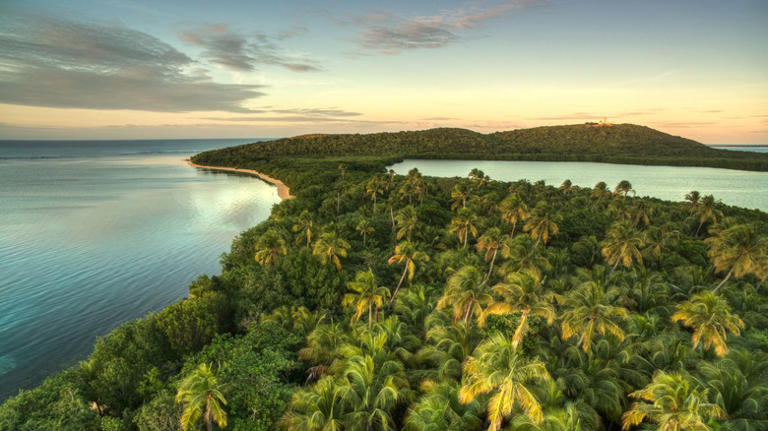

- River City Live
- Newsletters
WEATHER ALERT
2 river flood warnings in effect for Brantley and Columbia Counties
Puerto rico republicans award trump all 23 of their delegates.
Dánica Coto
Associated Press
SAN JUAN – Puerto Rico’s Republican Party held a district assembly on Sunday and awarded former President Donald Trump all 23 of their national delegates.
About 77% of the 1,340 members that make up the U.S. territory’s Republican Party participated, according to Angel Cintron, who heads the GOP there.
Recommended Videos
He said they held a caucus-style vote that decided how Puerto Rico's delegates to the Republican National Convention in Milwaukee, Wisconsin , in July will pledge their votes. Twenty delegates and 20 alternates were chosen.
Trump effectively clinched his party’s nomination earlier this year.
As a U.S. territory, Puerto Rico does not participate in the presidential elections but does vote in primaries for the eventual nominees.
Politics in Puerto Rico is dictated by the political status people believe the island should have: statehood, independence or the territorial status quo. Several prominent members of the island’s Republican Party had announced ahead of the district assembly that they do not support Trump.
Copyright 2024 The Associated Press. All rights reserved. This material may not be published, broadcast, rewritten or redistributed without permission.
Click here to take a moment and familiarize yourself with our Community Guidelines.

IMAGES
VIDEO
COMMENTS
Planning a Puerto Rico getaway just got a lot easier: the Caribbean island has eased local COVID-19 restrictions for domestic travelers, per executive order. Starting today, March 10, all domestic travelers flying to Puerto Rico will no longer be required to provide proof of vaccination or a negative COVID test before departure.
Recommended for unvaccinated travelers one year old or older going to Puerto Rico. Infants 6 to 11 months old should also be vaccinated against Hepatitis A. The dose does not count toward the routine 2-dose series. ... If your travel plans in Puerto Rico include outdoor activities, take these steps to stay safe and healthy during your trip.
Puerto Rico will eliminate all pandemic-related border protocols for domestic travelers this week, opening the door to much easier travel between the island territory and the mainland United States.
Puerto Rico reported 1,727 new cases on Thursday, a fraction of the more than 14,000 daily cases it reported in early January, according to data from Johns Hopkins University.
Starting March 10, 2022, travelers no longer need to present proof of vaccination or a negative COVID-19 test result to travel to Puerto Rico if they are arriving on a domestic flight from the U.S. mainland. Travelers arriving on international flights must follow the U.S. Centers for Disease Control and Prevention's requirement to show proof ...
Find continuously updated travel restrictions for Puerto Rico such as border, vaccination, COVID-19 testing, and quarantine requirements.
Puerto Rico is enforcing local measures developed by the Puerto Rico Tourism Company (PRTC), alongside U.S. Travel Association (USTA) guidelines, such as social distancing, mandatory face coverings in public areas, and a variety of mandates for businesses - including, but not limited to, reduced capacities and high standards of cleanliness in accordance with CDC and EPA guidelines.
Updated March 10, 2022. Travel to Puerto Rico just became a lot smoother. As of March 10, all pandemic-era protocols for domestic travelers have been lifted, providing even more incentive to visit the Caribbean island territory. Travelers visiting from the mainland U.S. are no longer required to provide proof of vaccination, a negative COVID-19 ...
USA TODAY. 0:04. 1:22. Puerto Rico this week is dropping nearly all travel-related COVID-19 restrictions for domestic travelers from the U.S. as case counts on the island continue to fall ...
Puerto Rico, which has maintained some of the strictest Covid-19 measures in the United States during the pandemic, announced Tuesday it's relaxing travel restrictions.
Puerto Rico has used a multi-pronged approach to the pandemic by using tactics from masks to curfews. While most of the rules have been lifted, Puerto Ricans still take the virus seriously; more than 95% of the population has received at least one dose of a COVID vaccine. This guide lets travelers know what to expect when traveling to Puerto Rico, and what it's like on the island once you ...
Puerto Rico is committed to providing a safe travel experience. Recognizing the importance of hygiene and disinfection, the Island of Puerto Rico is applying locally enforced measures developed by the Puerto Rico Tourism Company (PRTC), alongside U.S. Travel Association (USTA) guidelines, to safeguard the wellbeing of guests and employees.
This page was last updated on 29 October, 2021. At a Glance Most travelers from United States are allowed to enter Puerto Rico, but there are restrictions. Source: Discover Puerto Rico Puerto Rico: Open for Travel Travel is allowed with restrictions Travelers arriving from other US territories and states are allowed to enter […]
Puerto Rico should be high on their list as Americans can visit without a passport. That's a significant advantage given the current extended wait time for a new travel document. Routine processing times are up to 10-13 weeks while expedited processing (for an additional $60) can still take as long as 7-9 weeks.
Office of the Spokesperson. April 19, 2021. State Department Travel Advisory Updates. In order to provide U.S. travelers detailed and actionable information to make informed travel decisions, the Department of State regularly assesses and updates our Travel Advisories, based primarily on the U.S. Centers for Disease Control and Prevention (CDC ...
Latest Updates. Puerto Rico has one of the highest rates of vaccine doses administered against COVID-19 among United States jurisdictions. The Island has a vaccination rate of 155,266 doses administered per 100,000 people. 95% of the eligible population have received at least one dose of the vaccine, and 87% are fully vaccinated.
Here is an overview of the current travel restrictions to Puerto Rico. COVID-19 Testing Requirements: All travelers to Puerto Rico, regardless of their vaccination status, are required to present a negative COVID-19 test result taken within 72 hours prior to arrival. The accepted types of tests include PCR tests and antigen tests.
So whether you're hiking, surfing, zip-lining, boogie boarding or heading to one of the island's many festivals, here are our top tips on planning, etiquette and health and safety in Puerto Rico. 1. Check the visa rules and passport requirements. While Puerto Rico is its own country, and local laws and customs differ from those of the United ...
Zika virus: Advice for travellers - 31 August, 2023. COVID-19 and International Travel - 13 March, 2024. Dengue: Advice for travellers - 8 April, 2024. This section contains information on possible health risks and restrictions regularly found or ongoing in the destination.
Puerto Rico is Major restrictions for travel. Get travel ban, restrictions alerts and advice before travelling to Puerto Rico. Puerto Rico is undefined with main city at San Juan. Its Developing country with a population of 3M people. The main currency is US Dollar. The languages spoken are Spanish and English.
You are about to leave travel.state.gov for an external website that is not maintained by the U.S. Department of State. Links to external websites are provided as a convenience and should not be construed as an endorsement by the U.S. Department of State of the views or products contained therein. If you wish to remain on travel.state.gov ...
In the first ten days of 2024, Puerto Rico had 65 quakes with magnitudes up to 3.6: 14 quakes above magnitude 3. 44 quakes between magnitude 2 and 3. 7 quakes below magnitude 2, typically not felt by people. A destructive earthquake is rare during a short visit to Puerto Rico, but can still happen.
Puerto Rico is an island in the Caribbean. It is located southeast from Florida, directly east of the Dominican Republic and Haiti. The average flight from Miami to San Juan is 2.5 hours. See our comparison of a Mexico vs Puerto Rico vacation.
If you're heading out from San Juan, keep in mind that rush hour traffic typically takes place from 8 a.m. to 10 a.m. and from 4 p.m. to 6 p.m. Another thing to consider if you don't like crowds ...
All the events this summer come on the heels of record tourism numbers. Saglie explains the reasons more people are traveling to Puerto Rico. He says it's because you don't need a passport and ...
FILE - The Puerto Rican flag flies in front of Puerto Rico's Capitol as in San Juan, Puerto Rico, July 29, 2015. Puerto Ricos Republican Party held a district assembly Sunday, April 21, 2024, and ...